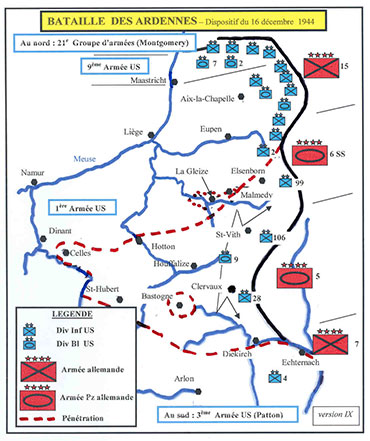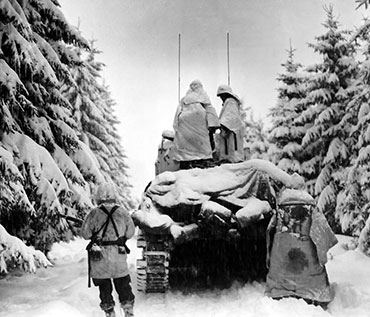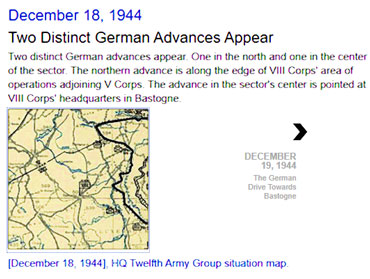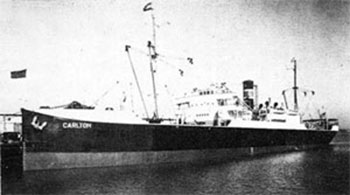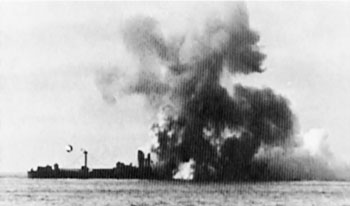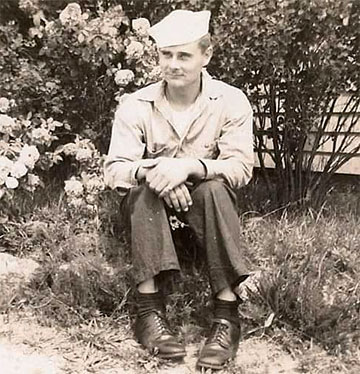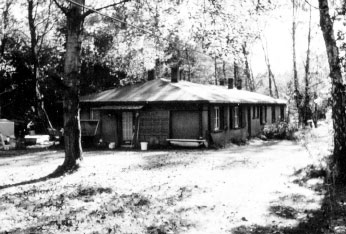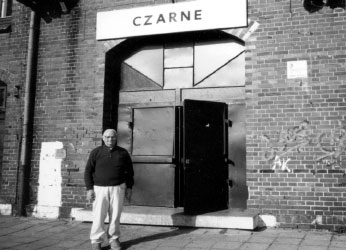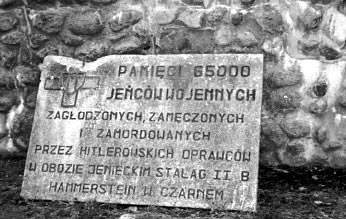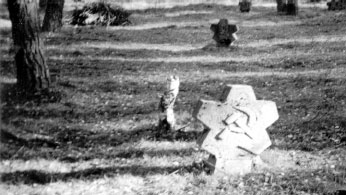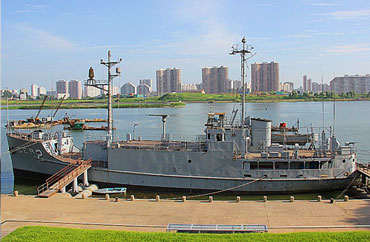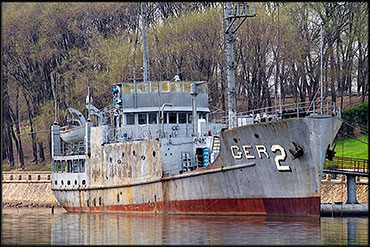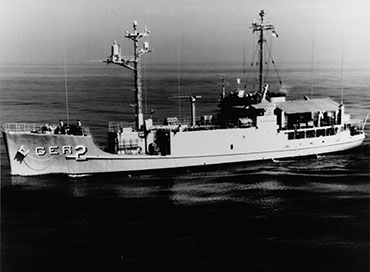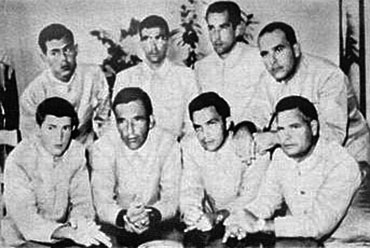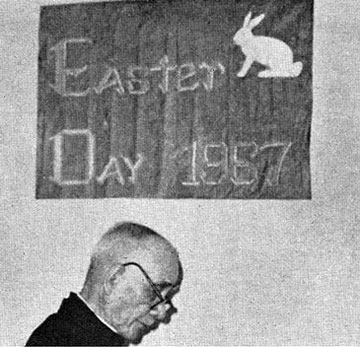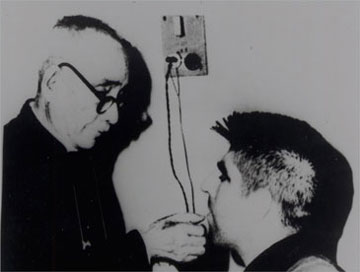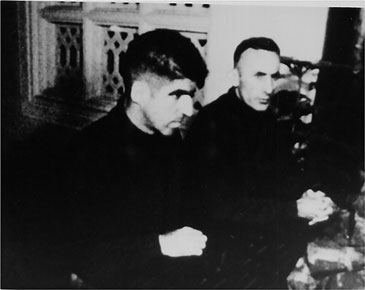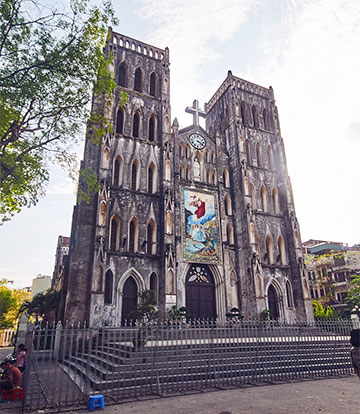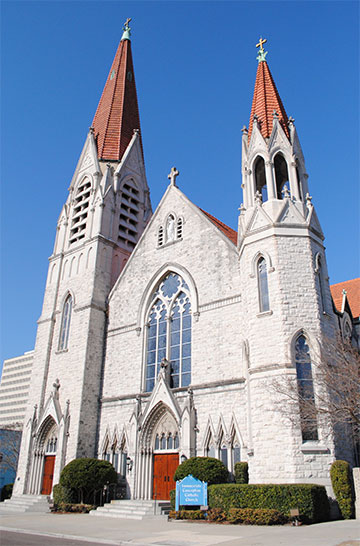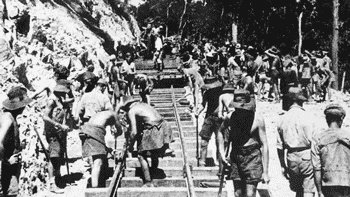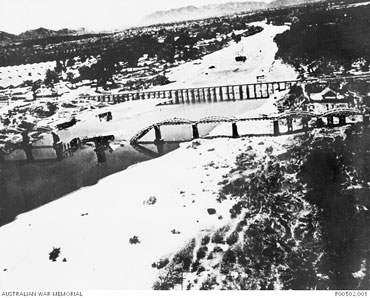 |
American Ex-Prisoners of War
A not-for-profit, Congressionally-chartered veterans’ service organization advocating for former prisoners of war and their families.
Established April 14, 1942. |
|
As a 501(3)c nonprofit organization, American Ex-Prisoners of War is eligible to receive tax-deductible charitable contributions. GuideStar gathers, organizes, and distributes information about U.S nonprofits, and awards its gold seal in recognition of transparency and currency in financial reporting.
|
Veterans and Military Connected Community
White House Office of Public Engagement April 9, 2024 A Proclamation on National Former Prisoner of War Recognition Day
2024 On this day, we honor the more than half a million brave patriots who sacrificed their freedom as prisoners of war — risking their own safety for the safety of their fellow Americans. We recommit to fulfilling our country’s one truly sacred obligation: to prepare and equip those we send into harm’s way and to care for them and their families when they return home and when they do not.
>p>Last September, I visited a memorial in Hanoi for my friend, former United States Senator John McCain, who had been imprisoned there for five and a half years when he was a Lieutenant Commander in the Navy. I reflected on the unfathomable conditions and pain that he and so many others have endured as prisoners of war. It was a solemn reminder of the grave costs of war and the immense sacrifices American service members are willing to make to defend our Nation. They have always embodied the highest expectations of our democracy — daring all and risking all so that our country remains free and our people remain safe. We owe them and their families, caregivers, and survivors a debt of gratitude we can never fully repay but will never cease trying to fulfill.
Today, and every day, we recommit to this vow. We honor the unbending courage and unshakable devotion of our former prisoners of war. We reaffirm our commitment to bringing home all those still missing or unaccounted for. We pledge to keep faith in all these heroes and their families — just as they have kept ultimate faith in our Nation.
May God bless our former prisoners of war and their families, caregivers, and survivors — and may God protect our troops. Click here to read the full proclamation. Remembering Our Veterans This Christmas PastOn a December morning back in 2008, six Christmas wreaths showed up in a package addressed to the Andersonville National Cemetery (a principal component of the Andersonville National Historic Site in southern Georgia, which also encompasses the National Prisoner of War Museum and the Confederacy's historic and infamous Civil War prison site). For a moment nobody was sure why. After some brief confusion and closer inspection, it eventually became clear they had come from an organization called "Wreaths Across America."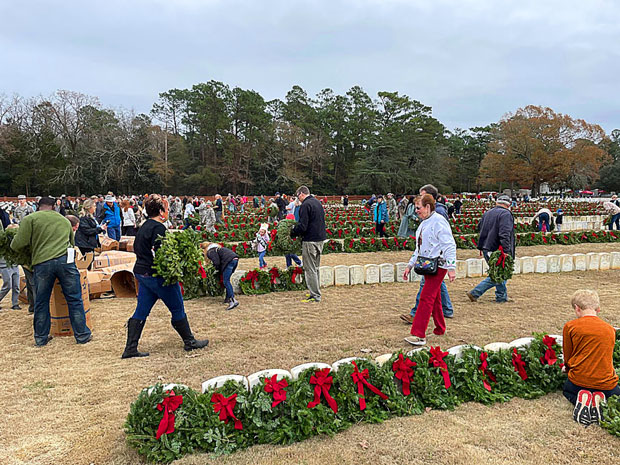
And the purpose of the wreaths? They were to be placed at the graves at Andersonville's National Cemetery for the Christmas holidays as a way of honoring the sacrifice of the servicemen interred there. Thus began an annual practice, not just at Andersonville but at cemeteries across the country and around the world, of remembering America's war dead during the holiday season and rededicating her citizenry to the values that their dedication exemplified. This past Christmas season, on December 14, volunteers and supporters at more than 4,225 participating locations in all 50 states, at sea and abroad placed wreaths on our veterans' graves at local, national and military cemeteries as well as at Veterans' Memorials and historic sites. At Andersonville more than 20,000 veterans' graves were so honored last year. The wreaths donated for Wreaths Across America are produced at Worcester Wreath Co. of Harrington, Maine. Moving this cargo from Maine to Georgia is a complex process involving many hands. Each year the Bennett Family of Companies of McDonough, GA, and their charitable arm, the Taylor Family Foundation, provide the five tractor trailer trucks and truckers needed to transport the wreaths from Maine to Georgia. They also raise a sizable amount of the funds to purchase the wreaths in conjunction with their partner, Truist Bank. Unloading the trucks and handling the freight was accomplished with help from South Georgia Technical College which provided forklifts and operators. A Bennett executive serves as organizational lead for the project each year. Friends of Andersonville, a non-profit corporation that provides financial support to the Andersonville historic prison site, the National Cemetery, and the National POW Museum through endowment grants, and the AXPOW organization also made significant contributions to the project through the purchase of wreaths. 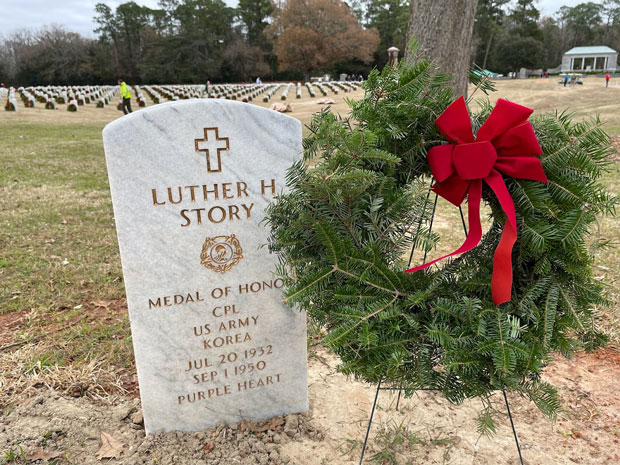
Finally, volunteers have to be recruited and trained for the respectful and somber process of placing the wreaths as well as the often-unnoted task of gathering and disposing of the wreaths later in January. Volunteers come together to attend a short ceremony where they are instructed on how to place each wreath, taking care to say aloud the veteran's name at each grave. In this most recent ceremony, more than 2,000 volunteers came to Andersonville to place wreaths. Three recent burials were notably honored: Corporal Luther Story, Korean War Medal of Honor Recipient and MIA for 73 years, Captain Jerry Riddle US Army and Specialist Desmond Campbell US Army. All told, last year 2.7 million veterans’ wreaths were placed at sites like Andersonville across the country and abroad. And more than two million volunteers participated. More than a third of those volunteers were children. 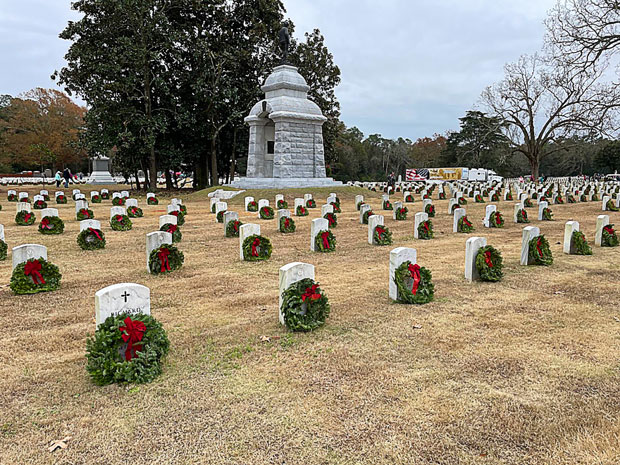
posted 2/8/24 Remembrances of Christmas from Another TimeThis “Christmas in Camp” compilation is on loan from the website of Imperial War Museums. IWM is a charity that seeks to serve as a global authority on conflict and its impact on people’s lives. It collects objects, stories, and audio and video segments all of which offer insights into people’s war experiences and preserves them for future generations.
IWM manages five different museums, in London and Belfast, whose collections, in the organization’s own words, “explore the causes, course and consequences of war, from the First World War through to present-day conflicts.” For anyone with an abiding interest in the experience shared by those, both in and out of uniform, living contemporaneously with the disruption of war, the IWM website is well worth visiting. The charity holds over 20,000 individual collections of private papers and nearly 11 million photographs. It can be viewed at https://www.iwm.org.uk. Reprinted here with their kind permission. Christmas in Captivity'Joyeux Noel'Millions of prisoners were taken captive during the Second World War and their experiences varied according to many factors – from where they had been captured to their nationality, race and whether they were a civilian or serving in the military.
Though separated from friends and family and living in tightly controlled conditions, some prisoners were able to find ways to mark Christmas and New Year, using their creativity and comradeship to get them through. Explore these items from IWM’s collection to find out more about how POWs celebrated Christmas. 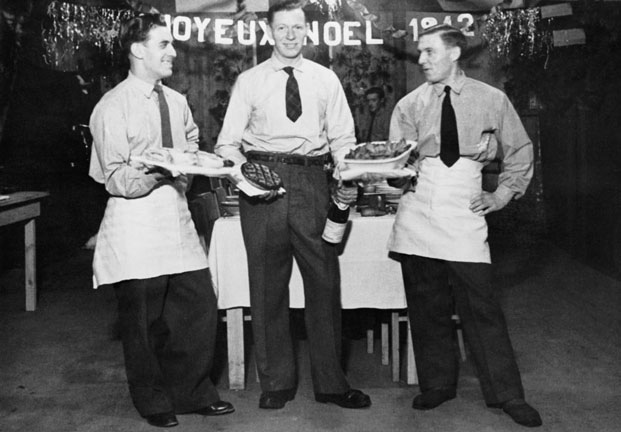 Three French POWs smile for the camera as they hold up their special Christmas offerings at Stalag Luft III, Sagan, December 25, 1942. © IWM (HU 20951) © IWM (HU 20951) Sharing a MealFlight Lieutenant Paul Cunningham’s Lancaster bomber was shot down over Scholven-Buer in Germany during a raid on June 21-22, 1944. He survived the crash but was captured and sent to Stalag Luft III. This Christmas menu from 1944 records the meal enjoyed by Cunningham and his fellow prisoners, largely based on the shared contents of Red Cross parcels.
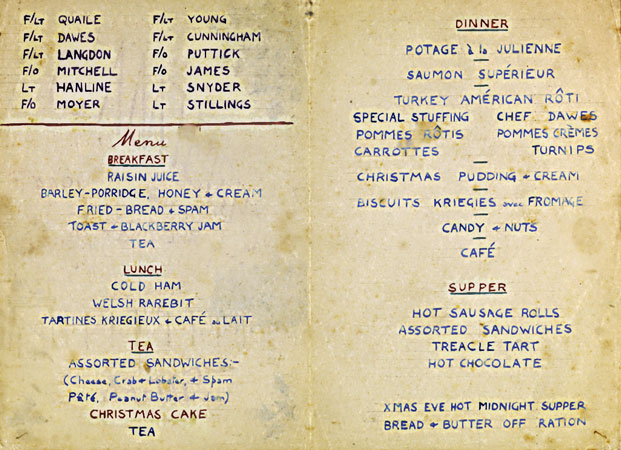 Christmas menu from 1944 POW camp © IWM (Documents. 19672/B) Christmas in ColditzColditz Castle was a high-security prison and was the place the Germans sent their most difficult POWs—many of those held there had previously attempted escape from other camps. In this photo, prisoners pose for a photograph together in front of a Christmas tree.
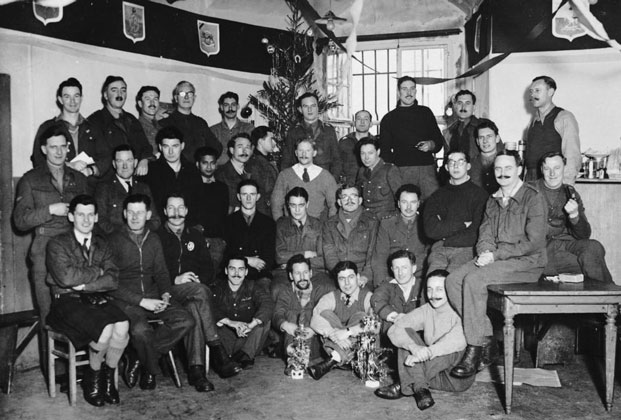 A group of British prisoners of war smile for the camera at Christmas. © IWM (HU 20276 'Breakfast, Luncheon and Dinner'Food is often at the center of Christmas celebrations. Prisoners held at Oflag IXA/Z in Germany created this beautifully illustrated poster advertising the Christmas and New Year menu at the camp—in one drawing, a pear in a policeman’s uniform arrests a "stewed fruit."
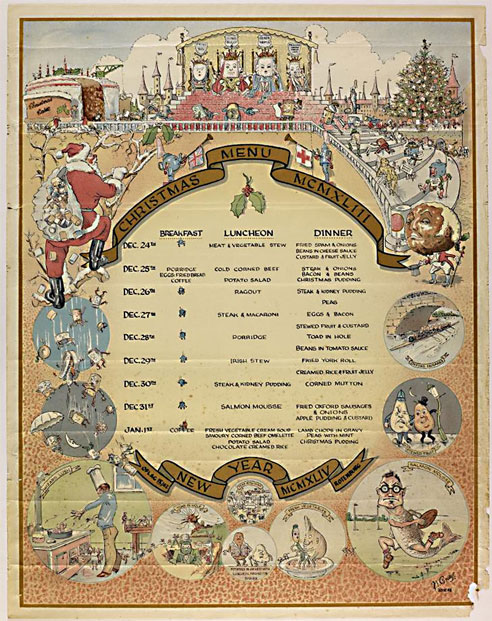 Illustrated poster made by POWs in Oflag IXA/Z, Rotenburg, advertising Christmas and New Year meals in the camp. (Click here to enlarge image.) ©IWM (Documents.7317/A ‘To Peglums’War separated loved ones, but people were sometimes able to find a way to communicate their feelings and seasonal wishes. James Buckley was held in Shamshuipo camp, Hong Kong. He sent this handmade card to his wife Margaret in 1942.
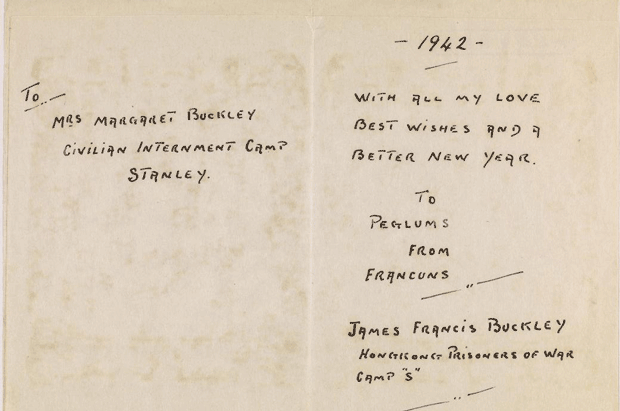 Handmade Christmas card sent by James Buckley to his wife, while a POW in Shamshuipo camp, Hong Kong. ©IWM (Documents.17928/A ‘From All German POWs of This Station’Despite being imprisoned on British soil, German soldiers were able to exercise their creativity in the camps and designed this Christmas card.
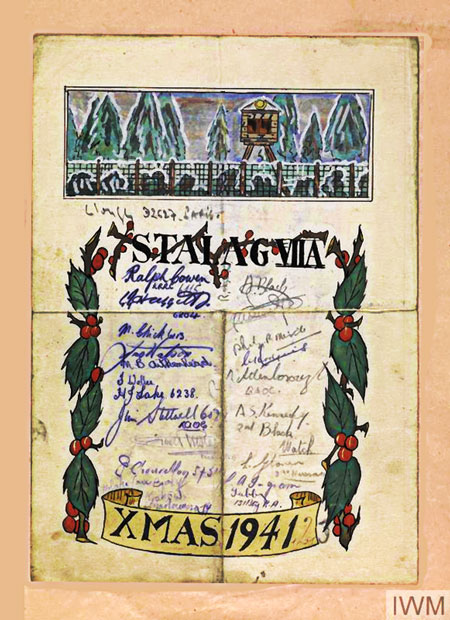 Handmade Christmas card from German prisoners of war still held in Farnborough, Hampshire in 1947.
©IWM (Documents.8587/A Xmas GreetingsGeorge Charlton was a Staff Sergeant in the Royal Army Medical Corps who was imprisoned in Singapore from February 1942 to the end of the war, mainly in Changi camp until March 1945 when he was moved to the prisoner of war hospital at Kranji. He returned to the UK in October 1945. This handmade card was addressed to him at Christmas 1944.
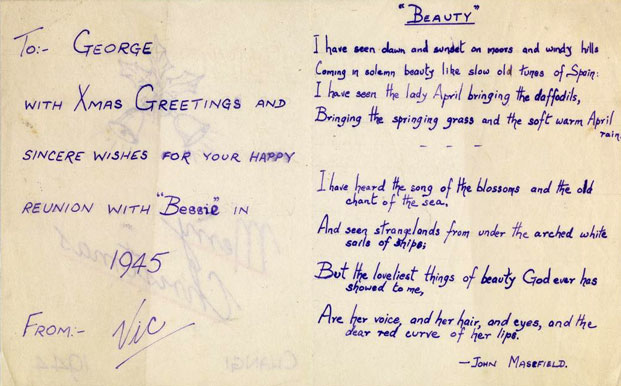 Handmade Christmas card from Changi prisoner of war camp, Singapore, 1944.
©IWM (Documents.22679/A posted 12/13/23 Bombing Hitler's Gas Station, 1943Before Rockefeller discovered Pennsylvania, before Texas and Oklahoma, before Aramco, before the North Sea or Prudhoe Bay, before the Bakken Formation, there was Ploiești.
Romania, at the beginning of the 20th century, was one of the largest oil producers in the world. While its fields have now mostly matured, Romania drilled its first commercial oil well in 1857 and was the only country in the world that year to report significant crude oil production. The United States itself would not report any significant crude oil production until 1860. " They were flying so low — sometimes just 50 feet off the ground — that gunners on the bombers had to aim up at anti-aircraft guns positioned on the roofs of surrounding buildings."
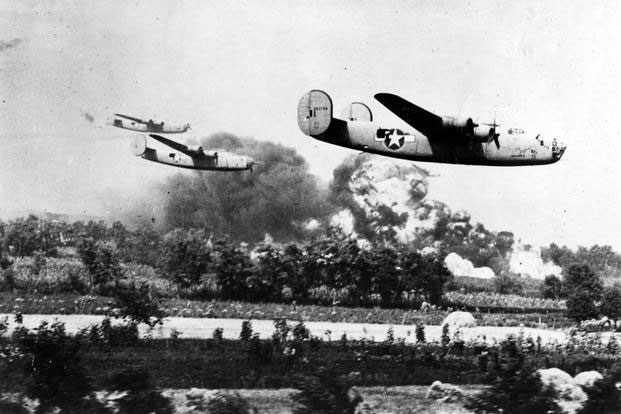 Three B-24 Liberator bombers, assigned to the 98th Bomb Group, fly a low-level bombing mission over the oil refineries around Ploiești, Romania, Aug. 1, 1943. (U.S. Air Force, Public domain, via Wikimedia Commons) The refineries near Ploiești, an industrial center in eastern Romania near Bucharest and the Black Sea, provided one-third of the oil supply of the Axis forces in World War II. Which made it an obvious target for aerial attack. One such attack, Operation Tidal Wave, launched on Sunday, August 1, 1943, was perhaps the most spectacular American bombing mission of World War II or at least in its European theatre. It was a bold, low-level assault involving 178 B-24 Liberator heavy bombers. Five heavy bombardment groups took part in Operation Tidal Wave: two from Benghazi, North Africa (the 98th and 376th), and three sent from England to Libya (the 44th, 93rd and 389th). Combined these were all the B-24 groups then available in the European and Middle East theatre of operation. The Consolidated B-24D Liberator was the only American long-range heavy bomber that could reach Ploiești from the nearest Allied air bases in North Africa. A crew of up to 10 operated a B-24, which was over 66 feet long with a 110-foot wingspan. It had a top speed of just over 300 mph and a cruising speed of 200 mph. It could carry up to 8,000 pounds of bombs, and it was equipped with nine or more 50 caliber machine guns for self-defense. With a 5,000-lb bomb load the aircraft could range up to 2,850 miles. It weighed up to 56,000-lbs when loaded. For the Ploiești mission, about 2,100 miles from North Africa to the target and back, the B-24s were given increased fuel loads with fuel tanks placed inside their forward bomb bays, leaving the aft bomb bay to carry the bombs, either six 500 lb bombs or four 1,000-pounders, plus some incendiary clusters to drop. Some B-24s in the lead waves were given a pair of fixed 50 caliber machine guns fitted in the lower nose and fired by the pilot to help suppress enemy ground-based defenses. A few aircraft even carried twin 50 caliber waist guns. 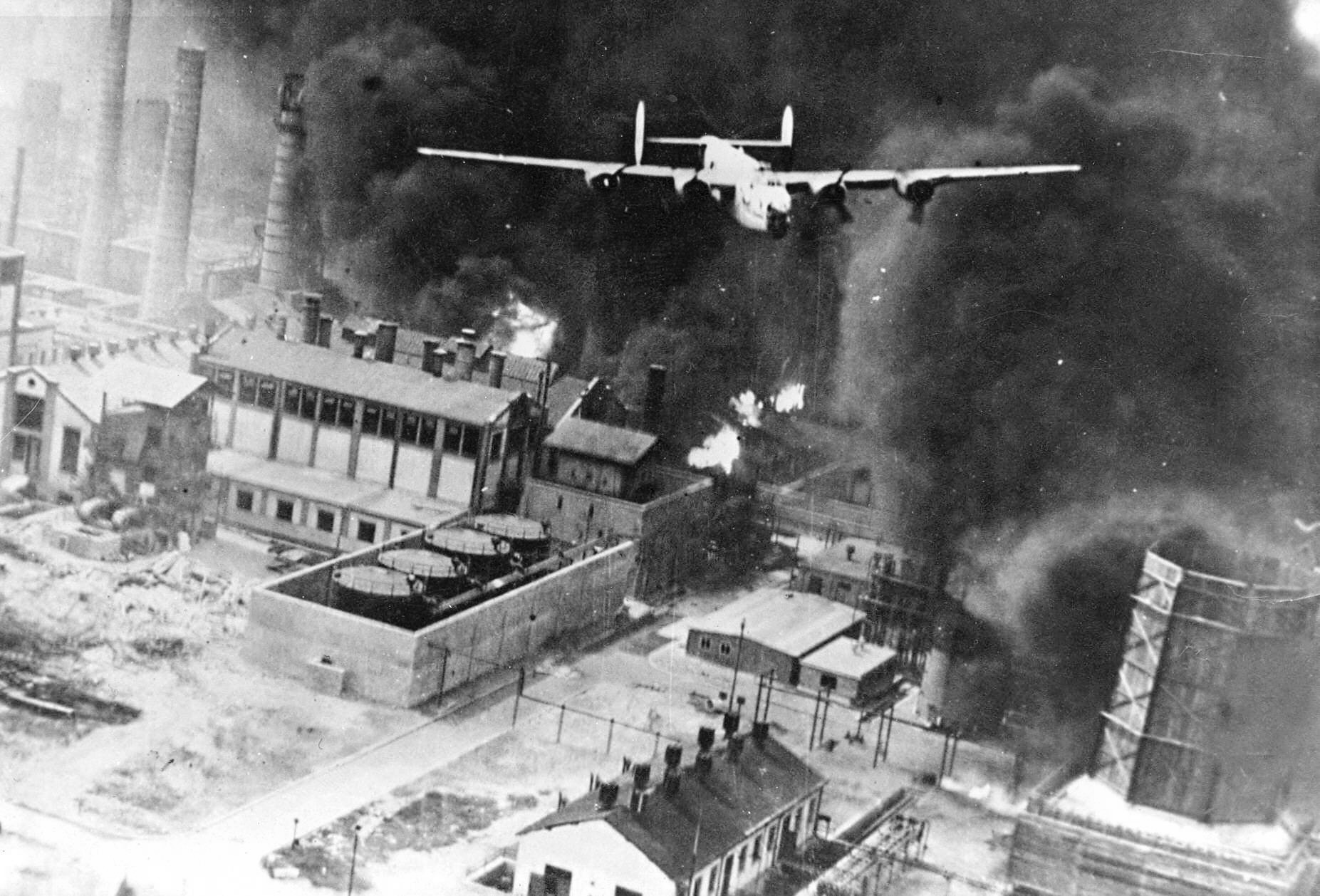 B-24 over Ploiesti, Operation Tidal Wave (Public domain, via Wikimedia Commons) Very early that Sunday morning, crews began taking off from Libya, flying in formation. Waves of B-24s followed each other, keeping radio silence and flying low to evade German radar. The planes were to fly across the Mediterranean and the Adriatic Sea, pass near the island of Corfu, cross over the Pindus Mountains in Albania, cross southern Yugoslavia, enter southwestern Romania, and turn east toward Ploiești where they were to locate pre-determined checkpoints, approach their targets from the north and strike all targets simultaneously. The attack was painstakingly designed and practiced repeatedly, but little went as planned. At the very start of the 1,000-mile run from Libya one aircraft crashed on take-off. Over the Mediterranean another began flying erratically and plunged into the sea for reasons still unknown. A plane descended from the formation to look for survivors, narrowly missing another aircraft in the process and then due to its additional fuel weight was unable to regain altitude to resume course to Ploiești. Ten other aircrews also proved unable to regain formation cohesion after the incident, hampered in their efforts by orders to maintain radio silence, and had to return to friendly air fields. The remaining aircraft next faced a steep ascent over the Pindus mountains, shrouded this day in a stormy cloud cover. The clouds broke the formation into two groups. Although all five groups made the 11,000 ft climb, the first two groups (the 376th and 93d), flying higher and using higher engine power settings, pulled ahead of the trailing formations (the 98th, 44th and 389th), creating speed and time variations that would disrupt the synchronization of the group attacks. After the mountains, the gap had grown to 20 minutes. Precise timing and distance were critical for the bombers to all reach their targets at the right time and in the correct intervals. 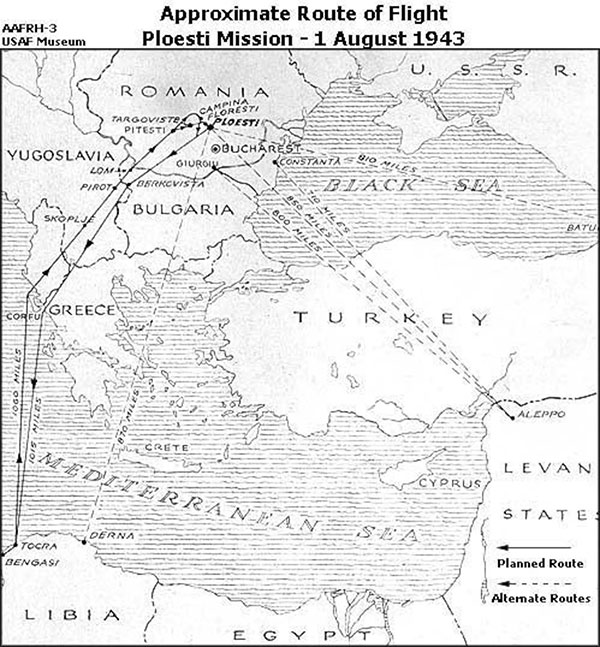 Public domain, USAF Museum via Wikimedia Commons
Then navigation issues led entire squadrons off course.A disastrous premature right turn just short of the final initial checkpoint set the two leading bomber groups on a course to Bucharest instead of Ploiesti. The correction, when they finally made it, forced the bombers to approach their targets from the south, where the Nazis had concentrated their anti-aircraft batteries, rather than from the north as planned. Arriving over a heavily-defended target area, disorganized and without the planned element of surprise, The Allied airmen encountered heavy resistance. The Germans knew more about the raid and were far better prepared for it than the Allies anticipated. The ensuing attack proved dramatic, chaotic and costly. Disguised defenses, such as anti-aircraft guns hidden among train tracks, oil tanks, and surrounding fields, greeted the bombers as they approached their targets. Billowing clouds of black smoke limited visibility and interfered with navigation as the B-24s descended to drop their bombs. They were flying so low — sometimes just 50 feet off the ground — that gunners on the bombers had to aim up at anti-aircraft guns positioned on the roofs of surrounding buildings. Explosions from the ordinance dropped by the first groups of bombers made visibility even more difficult for the later groups, which were essentially following, or even flying into, their predecessors' paths. Compounding the confusion, some of those planes had abandoned their original assignments in favor of bombing more accessable "targets of opportunity." The three trailing groups, discovering assigned original targets had already been hit, also had to pick targets out by sight and try to bomb whatever refineries they could see. Facing a fiery landscape black with thick smoke, withering ground fire coming at them from both above and below, and 60-foot flames shooting up higher than their aircraft were flying, some bombardiers jettisoned their payload before even finding a target. Pilots began looking for someplace to set down their bullet-riddled planes before being shot down or set ablaze by the inferno raging below them. One of the downed planes crashed into a female prison in Ploiești, killing a reported 100 civilians and injuring 200 others. 88 B-24s returned to Libya; 55 had battle damage. German air defenses accounted for 44 of the losses. Additional B-24s ditched in the Mediterranean on the return trip or were interned after landing in neutral Turkey. One B-24 with 365 bullet holes landed in Libya 14 hours after departing. A total of 23 others landed at Allied bases in Cyprus, Malta and Sicily. The Americans sustained 310 air crewmen killed or missing, 108 captured by the Axis, 78 interned in Turkey, and four taken in by Tito's partisans in Yugoslavia. Of 178 bombers and 1,726 men on the mission, 54 aircraft and nearly 500 men failed to return. Although the raid significantly damaged Ploiesti's oil facilities, the enemy quickly restored production. Tidal Wave succeeded in destroying two of nine refineries and damaging three others. Despite the extreme heroism of the airmen (five Medals of Honor awarded the most for any single air action in history—three posthumously) and their determination to press the mission home, the results of Operation Tidal Wave were less than expected. The targeted refineries produced some 8,595,000 tons of oil annually. The attack temporarily eliminated about 3,925,000 tons. Three refineries lost 100 percent of production but the Germans restored production surprisingly quickly. The largest and most important refinery target, Astro Romana, was back to full production within a few months; Concordia Vega was operating at 100 percent by mid-September. Even so, notwithstanding its high cost in materiel and human lives, Tidal Wave strategically proved in some respects a moderate success. Falling far short of the original goals, it did cut Germany's oil distillation capacity at a time when her war machine needed it most to confront the Red Army’s drive toward the Fatherland. The Reich ran painfully short of fuel for combat, transportation and training. Ploiești was not attacked again until April 1944. Nearly a year after Tidal Wave, heavy bombers again appeared in the skies over the oil refineries. This time they flew at over 28,000 feet. (The U.S. Army Air Forces never again attempted a low-level mission against German air defenses.) They again took heavy losses but dropped sufficient ordinance on their targets that, while Ploiești never stopped producing fuel, the the German army found itself living off rapidly diminishing stockpiles as it used up gasoline and aviation fuel to fend off the advancing Allied armies. As World War II began, Romania had been a neutral country Amidst rising Fascist political sentiment, a coup in September 1940 deposed the country's king and turned the government into a dictatorship under Marshal Ion Antonescu, a far-right leaning, and highly anti-Semitic, career military officer in Romania's army. The new regime officially joined the Axis powers in November 1940 and brought with it what was the third-largest Axis army in Europe. But as the war wore on, besieged by relentless Allied aerial attacks and heavy troop losses on the Eastern Front, the nation's popular support for the war faltered. In a late summer offensive in 1944 the Soviet Red Army overtook the Ploiești oilfields— days before King Michael, son of the previously deposed King Carol II, led a coup d'état that toppled the Antonescu regime and put Romania on the side of the Allies for the remainder of the war. 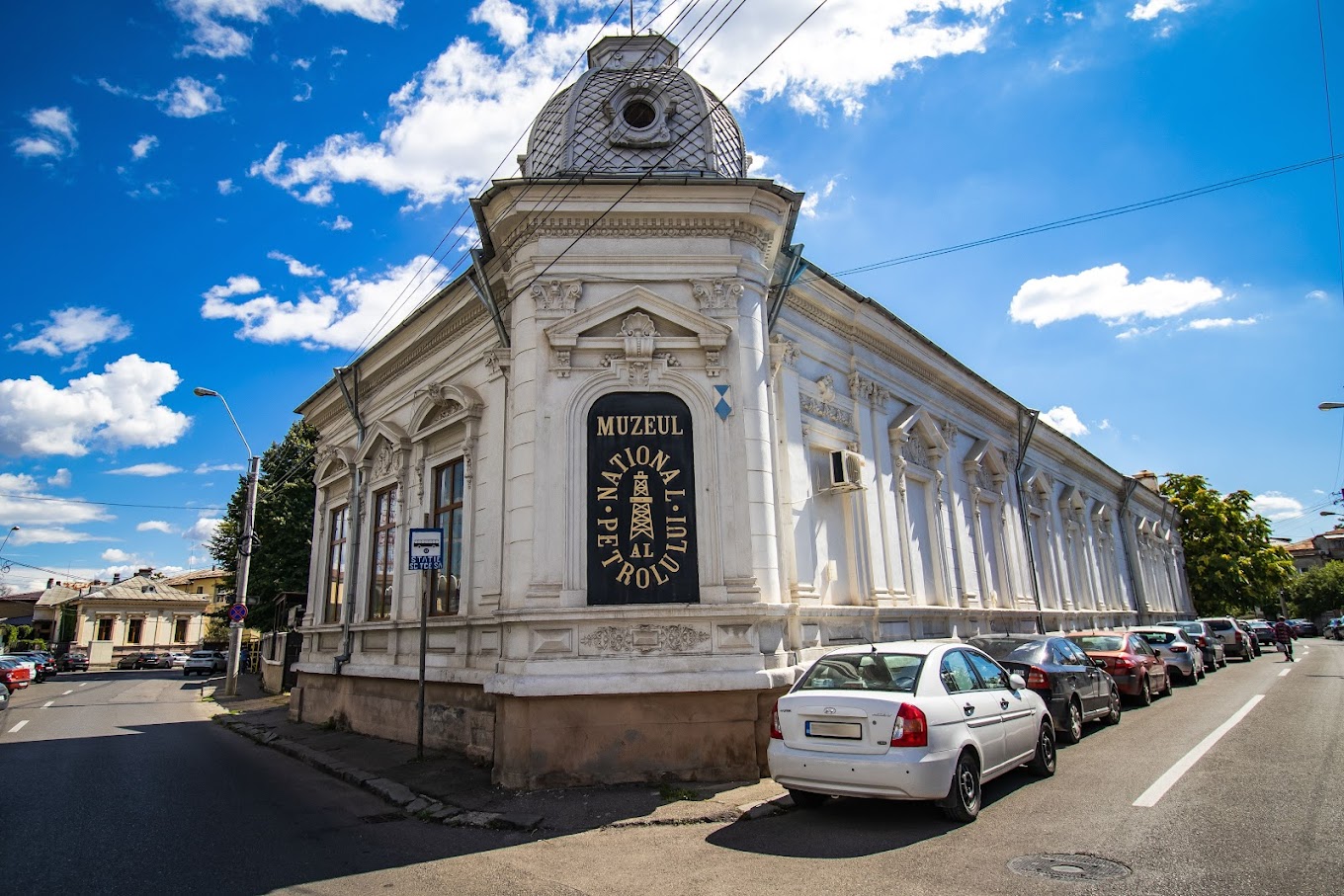 National Museum of the Oil Industry, Ploiesti Romania National Museum of the Oil Industry, Ploiesti RomaniaRomania today ranks 44th globally in proven oil reserves. Ploieşti, with its refineries, storage tanks, oil-field equipment works and distillery, remains the country’s primary petroleum center. The Encyclopedia Britannica notes it is also a cultural center, with six museums (including the National Oil Museum, which traces the development of the Romanian petroleum industry). posted 8/22/23 The Golden Anniversary of 591 Personal VictoriesOn January 27, 1973, Henry Kissinger (then President Richard Nixon’s National Security Advisor) reached a ceasefire agreement with North Vietnam providing for the withdrawal of American military forces from South Vietnam and the release of nearly 600 American prisoners of war held by North Vietnam and its allies. That was fifty years ago this year.
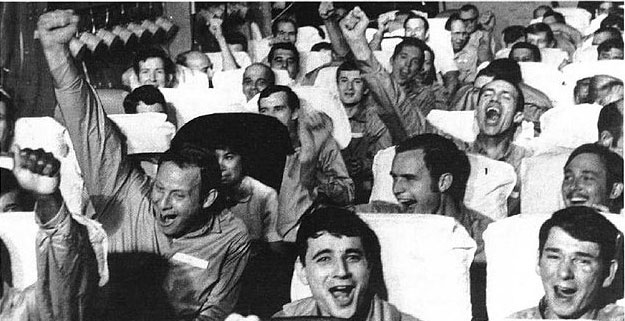 U.S. Marines in Vietnam, the war that would not end, 1971-1973 (Public domain, via Wikimedia Commons)
The returnees maintained their composure until it was clear they were again safe under American control. No one was silent as the Air Force C0141 Starlifter left the runwaty at Hanoi. The photographer, TSgt Robert N. Denham, USAF, observed, "You could hear the shouts all over the aircraft" on this 28 March 1973 flight. Department of Defense Photo (USMC).
Under the terms of Operation Homecoming, as it was dubbed, POWs held by the Viet Cong were flown by helicopter to Saigon, POWs held by the People's Army of Vietnam were released in Hanoi and three POWs held in China were freed in Hong Kong. From there they were flown to Clark Air Base in the Philippines for processing, debriefing and physical examinations. They were then relocated to military hospitals. Of the POWs repatriated to the United States a total of 325 served in the United States Air Force, a majority of them bomber pilots shot down over North Vietnam or VC controlled territory. The remaining 266 consisted of 138 United States Naval personnel, 77 soldiers serving in the United States Army, 26 United States Marines and 25 civilian employees of American government agencies. A majority of the POWs were held at camps in North Vietnam, while some were held in at various locations throughout Southeast Asia. The prisoners returned included future politicians Senator John McCain of Arizona, vice-presidential candidate James Stockdale, and Representative Sam Johnson of Texas. (For a young, newly married wife's first-person account of her own journey through the dark period spanning her husband's capture and release, see "Operation Homecoming from Beginning to End… A Young Wife’s Personal Perspective" below.)
Operation Homecoming provided the country with moment of drama and celebration and ignited a torrent of patriotism that had not been seen at any point during the Vietnam War. President Nixon celebrated the return of the Vietnam POWs hosting an estimated 1,600 guests at a banquet held in a tent on the White House South Lawn. The tent was longer and wider than The White House itself, with 126 round tables set up for the guests. That banquet was—and remains—the largest in White House history. The menu included All-American fare: sirloin steak, fingerling potatoes and strawberry mousse The 591 former POWs, in full dress uniform, were entertained by comedian Bob Hope, who served as master of ceremonies, and mingled with senior military and government officials to celebrate their return. Other celebrities in attendance included John Wayne, Jimmy Stewart, Phyllis Diller, and Sammy Davis Jr. Irving Berlin along with the President and his wife Pat, joined by Sammy Davis Jr. and Bob Hope, concluded the evening by leading the guests in the singing of his American standard, “God Bless America.” In May of this year, in recognition of the Golden Anniversary of Operation Homecoming, numerous military installations conducted commemorative events celebrating once more the return of the American POWs 50 years ago. On the National Mall in Washington, the U.S. Vietnam War Commemorationan, authorized by Congress, established under the Secretary of Defense and launched by President Obama in 2012, sponsored a public exposition meant to honor those who served in the military during the war. Tents with different war-related exhibits were scattered across the Mall. Vietnam-era helicopters were on display. About 200 posters were positioned along the Lincoln Memorial Reflecting Pool, each with the face and name of troops still unaccounted for. The Nixon Foundation was the Official Site of the 50th Anniversary Commemoration of Operation Homecoming. On May 23-25, nearly 200 POWs and their families gathered at the Richard Nixon Presidential Library and Museum in Yorba Linda, CA, for a three-day reunion. Events included a community parade, recognition and honors from the U.S. Military, the official opening of a new exhibit, Captured: Shot Down in Vietnam, and an opportunity to hear reflections from the POWs themselves and their stories of survival and endurance in the face of physical and emotional torture, and of the bonds of brotherhood and faith that helped them persevere. On May 24, Nearly 150 former American Prisoners of War from the Vietnam War gathered in the East Room of the Nixon Library for a re-creation of the White House homecoming celebration dinner fifty years before to the day. The reenactment featured the menu selections and table centerpieces evocative of the style the original banquet in 1973. Several YouTube video clips have been posted in connection with the Golden Anniversary of Operation Homecoming, including the following.
Vietnam POW Homecoming Gala at the Nixon Library (May 24, 2023) Vietnam POW Welcome Celebration at the Nixon Library (May 23, 2023) Panel Discussion: Resilience, Fortitude and Faith: Vietnam War POWs Reflect 50 Years Later (May 25, 2023) Since 1973, more than 1,000 missing service members have had their remains returned to the United States for burial with full military honors. There are 1,581 Americans from the Vietnam War still missing in action. 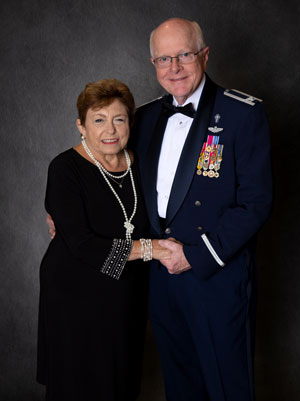
Operation Homecoming, Beginning
to End … a young wife’s personal perspective A memoir by Robbie Wade Certain
The circumstances of my life had prepared me for what I was letting myself in for, at least somewhat. But I had never dated a military officer before July 21, 1971. I was 22 years old. I had grown up in Blytheville, Arkansas, which had a B52G Air Force base. I was aware of this plane and understood its purpose as far back as elementary school. I actually had witnessed the arrival of the first plane at the base. I knew about the “red phone.” I was acquainted with Air Force officers and their children. I felt comfortable with the military and its lifestyle. I knew that B52s could carry nuclear weapons. I also knew they were very good airplanes with excellent safety records. But until 1971 all of that existed mainly on the periphery of my consciousness. I had come home to Blytheville after graduate school to teach, but it was love at first sight. Robert was a first lieutenant and a navigator bombardier. He had already been flying missions for four months (without incident). Then after 10 nights of dating, my future husband left me to go to Thailand. He came home at Thanksgiving, and we were engaged by New Year’s Eve. A perfect time to wed would be June. Plans were made for an elaborate event, a large wedding because Blytheville was, after all, my hometown. Life was progressing. School was winding down for the summer. And I was ready to marry my capable young officer. Ah, man plans and the gods laugh. B52s and their crews stood alert for seven days a month. The planes had to be ready to defend the nation at a moment’s notice. Wives, girlfriends, and families had visiting privileges at the Blytheville AFB when their men were on active duty, and one Sunday evening in May I went out to visit. It didn’t go as either of us had expected. Robert had been informed earlier in the day that all planes would be leaving for Guam by the end of the following week. So, I could marry Robert by the week’s end or wait for his return in six months. What a week. For all of us. I made an important decision and married him five days later. I had no idea what was ahead. Specifically, we were wed on May 25, 1972. As luck would have it, we wound up with six whole weeks of married life together before he left for Guam. We communicated after that daily by letter. We had two phone calls in six months. Phone calls to Guam were six dollars a minute at the time! I kept busy teaching two sessions of kindergarten daily and teaching community college two nights a week. Robert was due home the first week in December, but his orders were cancelled. The new date of return was December 18. I was so excited. I decorated the house with a tree and a manger scene he had made in the base hobby shop. He liked to say he made it “between bombing runs.” A Colonel had brought it to me in mid-December. Life was looking up. We were going to resume our young marriage. But when December 18 came, my world changed very unexpectedly. No matter how steady and solid you think you are, no one is prepared for the arrival of a notification of wartime status of a loved one. It was Christmas break, and I had gone home to have lunch with my parents. I had planned to pick Robert up in the morning hours of December 19. While I was eating lunch, my mother answered the phone and received news that military officers had been by my father's furniture store looking for him. Our salesman asked that my father stay home and wait until the officers arrived. At that point, I was sure something was wrong. I lost all interest in eating and began pacing the floor, pondering what could be going on. My parents were saying don't worry, but my stomach knew better. Some time earlier, a pilot’s wife had told me to never worry until the white-top cars show up. Well, two white- top cars were sitting outside our front door with at least six officers inside. This was my worst nightmare coming true. My mother and father had their arms around me as the notifying officer read a letter explaining that Robert had been shot down over Hanoi and was classified as Missing in Action. I didn’t know that B52s were flying over North Vietnam. Robert had not warned me that he would not be home on the 18th although he was suspicious with all the activities going on in Guam. Information was hush, hush, and men were not being informed of anything ahead of time. The whole world exploded, for me and other family members. The visiting officers expressed their sympathies. At that time, my father and mother were serving as liaison officers to the base, so there was a lot of respect and concern shown to us. I was going to go lie down and rest a little when another phone call came in, with better news. Robert's Social Security number was being released by Radio Hanoi. The next morning Robert’s picture along with those of five other officers was published around the world in every major newspaper. We were all learning about the United States attack on Hanoi. President Nixon hoped that bombing Hanoi would bring North Vietnam back to the bargaining table to end the war and bring all the POWs home. This was the beginning of Linebacker II. The bombing runs lasted for 11 days. My husband just happened to be on the first airplane to go down over Hanoi and was the first one captured. That was the start, for me, of Operation Homecoming. I had no idea when my husband would be home. I had only just been notified by the military, and they were supporting me with all the information they could. My job was to go on with my life, live it as a schoolteacher and a wife with a husband in the “Hanoi Hilton.” What could be more normal? But all my sights were set all along on the day my Robert would come back home to me. I have always been happy with my decision to marry before Robert went to Guam. I am sure I would not have gotten the information I did get as quickly, as a fiancée. I realized later in life that, in essence, I’d become a war bride, just like the young women of World War II. The good news? the bombing did the trick. Everybody came back to the table and started talking. The bad news? Over 30 men died in Linebacker II. A peace treaty was signed in January, and life was looking hopeful. We didn't know exactly how Operation Homecoming would work out, but we were getting informed each time a group of men were being flown home. As each release came, I would be notified that Robert was or was not on the airplane. But by the second release I'd figured out that the last ones in were going to be the last ones out. It was fair, but each time I got the same discouraging message my stomach would tie itself up in knots. 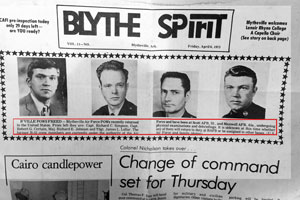
(caption)
B'VILLE POWS FREED--Blytheville Air Force POWs recently returned to the United States. From left they are: Capt. Richard C. Simpson, Capt. Robert G. Certain, Maj. Richard E. Johnson and TSgt James L. Lollar. The former B-52 crew members are currently under the authority of the Air Force and have been at Scott AFB, Ill. and Maxwell AFB, Ala. undergoing physical examinations and debriefings. And indeed, Robert was on the last plane to leave Hanoi. He called me when he reached the Philippines. Oh, that was a happy day for me. It would be only a few more days before I saw him again. He would be taken first to Scott Air Force Base in Belleville, IL, the closest major military hospital to Blytheville AFB. I don't remember much about the drive to Belleville, but I know that I had with me 30 pieces of paper orders in case I needed any one of them while on the base. At Scott I was greeted by an escort officer and his wife, Maj. and Mrs. DeCamillo. They were delightful and treated me well. The first thing they did was take me to the hospital for medicine. When I arrived at Scott I had a cold, a cough and a runny nose. Robert was to arrive the next day. President Nixon had arranged corsages for all the wives to wear upon meeting their husbands. My teaching assistant had also arranged for a red carnation corsage for me, a gift from my kindergarten students, who had brought in pennies, nickels and dimes to pay for it. I had to wear the carnations, which meant so much to me. The children knew all about the shoot-down and my husband’s incarceration. He was a hero to them. I learned a life lesson that day at Scott that has stayed with me through the years: stress can make you sick. Robert got off the airplane, hugged me and the cold was gone! Robert’s parents, my sister and her husband, and some very good friends from Blytheville AFB had come with us. Even Robert’s second grade teacher, who lived in the area, was there to welcome him home. The event was joyous, surreal and heavy. As happy and elated as we were, I was very mindful at that moment of the sacrifices other men and families had made. Some children would never know their fathers. Robert and I were newlyweds, and I felt how blessed we had been, but my joy was measured with emotions for other families. Robert and I attended the lavish White House dinner President Nixon hosted for the repatriated POWs on May 24, 1973. We considered it our first wedding anniversary party. Memories of that evening include the military bands playing as we got off the bus, the red carpet, moving to the bar area and meeting John Wayne, being escorted to the tables, flowing wine and champagne, our glasses were never empty, Bob Hope and Sammy Davis Jr., meeting Joey Heatherton in the ladies’ room and the crowning glory of the evening: Irving Berlin leading us in singing “God Bless America.” A fabulous evening in all details (the cherry tomatoes in the salad had been peeled). But in the midst of it all, my thoughts turned more than once to the three of Robert’s crew members who did not come home. One was MIA, one was reported killed and another’s body was shown to Robert in North Vietnam. We were still only 24 and 25 years old at the time of that dinner, after all that had gone before. Our marriage of 50 years has survived through the myriad bumps and challenges of life. We live at Blue Skies of Texas in San Antonio. (Formerly known as Air Force Village.) We have one son and one daughter and son-in-law with two teenage children, all living in Little Rock. We are content. We were at the Nixon Presidential Library this year for the 50th anniversary celebration of Operation Homecoming. A smaller scale with fewer celebrities, but a very familiar ambiance. Same table arrangements. Same menu. Same elegant assemblage. And the same waves of conflicting emotion. Gratitude for our great good fortune, sorrow for the loss and pain suffered by so many who sacrificed so much. I’m sure it will always be that way whenever I think back on it all, and I think back on it often. posted 7/13/23 Andersonville Marks National POW/MIA Recognition DayNational POW/MIA Recognition Day was established by Congress to honor those armed service members held captive, who returned or who remain missing, while fighting in the nation's foreign wars. In 1979 a Congressional proclamation signed by President Carter declared the third Friday in September as National POW/MIA Recognition Day. Each subsequent president has issued his own annual proclamation commemorating National POW/MIA Recognition Day.
This year to honor that tradition, Andersonville National Historic Site and the National Prisoner of War Museum conducted on September 16 a ceremonial wreath laying in remembrance of the sacrifice of those Americans who gave up their freedom on their nation's behalf.
Gia Wagner, Superintendent of the Historic Site, presided at the ceremony and explained the occasion would be marked, in cooperation with representatives of two of Site's most important support groups, American Ex-Prisoners of War and Friends of Andersonville, with the placement of three wreaths. Col. Wayne Waddell, US Air Force Retired and former POW during the Vietnam War, presented the Friends of Andersonville wreath. Sally Morgan, who was a child civilian internee during World War II at the Santo Tomas internment camp in the Philippines, presented the American Ex-Prisoners of War wreath. Col. David Eberly, US Air Force Retired, was the Senior Ranking Officer of all POWs captured in the 1991 Gulf War. He presented a wreath commemorating all POWs and those still officially missing in action. Superintendent Wagner addressed the crowd of attendees: "Today, at the National Prisoner of War Museum, which was designated by Congress as a memorial to all POWs throughout American History, "Such a large number is hard to fathom, but today especially, we remember them as individuals with families—whose stories and sacrifices deserve to be remembered and shared with future generations of Americans. I invite you to take a moment to reflect on those individuals." The Defense POW/MIA Accounting Agency, an arm of the Department of Defense, estimates there are more than 81,000 Americans still missing from past conflicts ranging from WWII to the Gulf War. In fiscal year 2022, the DPAA has completed nearly 100 missions in 37 countries searching for American personnel and has accounted for more than 140 missing American military members. Andersonville National Historic Site, located near Americus, GA, has three features: the National Prisoner of War Museum, the site of the Andersonville prison, and the Andersonville National Cemetery. The National Prisoner of War Museum commemorates the sacrifices of all American prisoners of war. posted 11/13/22 Where Have All the Flowers Gone?Congress designated the country's first federal holidays in 1870: granting paid time off to federal workers in the District of Columbia for New Year’s Day, Independence Day, Thanksgiving Day and Christmas Day. In 1888, it created Decoration Day, now known as Memorial Day.
The practice of honoring soldiers fallen in battle dates back thousands of years. Both the Greeks and Romans held annual days of remembrance each year for fallen soldiers, decorating their graves with flowers and holding public festivals and feasts in their honor. In Athens, public funerals for war dead were held after each battle. One of the first such public tributes took place in 431 B.C., with the Athenian general and statesman Pericles offering a funeral oration praising the sacrifice and valor of those killed in the Peloponnesian War, in a speech often compared to Lincoln’s Gettysburg Address.
Arlington National Cemetery, Public domain, via Wikimedia Commons
In the years following the end of the Civil War increasing numbers of American communities began ritually tending to the remains and graves of an unprecedented number of fallen soldiers. (All of the previous wars and conflicts fought by the United States combined barely add up to the body count the country suffered in the Civil War.) A few local springtime tributes to Civil War dead began even before hostilities had ceased. In Columbus, MS., April 25, 1866, it has been recorded that a group of women visited a cemetery to decorate the graves of Confederate soldiers who had fallen in battle at Shiloh. Nearby were the graves of Union soldiers, neglected because they were the enemy. Disturbed at the sight of the bare graves, the women placed flowers on their mounds as well. Three weeks after the Confederate surrender, on May 1, 1865, more than 1,000 people recently freed from enslavement, accompanied by regiments of the U.S. Colored Troops (including the Massachusetts 54th Infantry) and a group of white Charlestonians, gathered at a former war prisoner detention camp in Charleston, SC to consecrate a burial site for Union dead. Near the war's end, thousands of Union soldiers held as prisoners of war had been herded into a series of hastily assembled camps on the site of a former racetrack in Charleston. Conditions at one camp were such that more than 250 prisoners died from disease or exposure and had been buried in a mass grave behind the track’s grandstand. The gatherers sang hymns, gave readings and distributed flowers around the cemetery, which they dedicated to the "Martyrs of the Race Course." Cities in the North and South who claim to be the birthplace of Memorial Day.
For almost as long as there’s been an observance, there’s been a rivalry over who celebrated it first. All told, more than 20 towns claim to be the holiday’s birthplace. One has even received federal recognition. In 1966, 100 years after the town of Waterloo, New York, first shuttered its businesses and took to the streets for the first of many continuous, community-wide celebrations, President Johnson signed Congressional legislation declaring that tiny upstate village the “official” birthplace of Memorial Day
Some other contenders include the following: Warrenton, VA on June 3, 1861. The first Civil War soldier's grave ever to be decorated, according to a Richmond Times-Dispatch article in 1906, for the first soldier killed in action during the Civil War. (John Quincy Marr at the Battle of Fairfax Courthouse. Savannah, GA in July 1862. Women decorated the graves at Laurel Grove Cemetery of comrades who died at Battle of Manassas (First Battle of Bull Run). Jackson, MS in April 26, 1865. One Sue Landon Vaughan is said to have decorated the graves of Confederate and Union soldiers. However, the earliest recorded reference to this event did not appear until many years after. Regardless, mention of the observance is inscribed on the southeast panel of the Confederate Monument in Jackson, erected in 1891. Gettysburg, PA in 1863. The National cemetery dedication there included a ceremony of commemoration at the graves of dead soldiers. Some have therefore claimed that President Abraham Lincoln was the founder of Memorial Day. Carbondale, IL in 1866. Returning veterans, inspired by the sight of a young woman with infants at a small, unmarked grave in a church yard cemetery placing flowers and kneeling in prayer next to it, organized a memorial service to honor those who had died in the Civil War. Colonel E. J. Ingersoll, and General John A. Logan of the Union Army, led a procession to the town's Woodlawn Cemetery, where a number of Civil War soldiers had been interred. Columbus, GA in March 1866. Another Southern city named Columbus is credited by the United States National Park Service and numerous scholars for beginning Memorial Day observances in the South. The Ladies Memorial Association of Columbus members in a letter to newspapers in March 1866 asked for assistance in establishing an annual holiday to decorate the graves of soldiers throughout the South. It was reprinted by papers in several Southern states, and the plans were noted in newspapers in the North as well. On the chosen date, April 26, observances were held in Atlanta, Augusta, Macon, Columbus and elsewhere in Georgia as well as Montgomery, Alabama; Memphis, Tennessee; Louisville, Kentucky; New Orleans, Louisiana; and Jackson, Mississippi. Boalsburg, PA in October 1864. Only 100 miles away from Gettysburg, this small abolitionist community suffered multiple causalities throughout the Civil War. According to local historians, three local women, Emma Hunter, Elizabeth Meyer, and Sophie Keller, shared a bouquet of flowers on an autumnal Sunday and decorated the graves of their family members and friends. There are doubters of the veracity of Boalsburg's claim and its timing, but if true, the federal government might need to wrestle with the logistics of having to repurpose Memorial Day into a fall holiday. On May 5, 1868, Maj. Gen. John A. Logan, by then head of the Grand Army of the Republic (GAR), an organization of Union veterans, called for a nationwide day of remembrance later that month, declaring it "Decoration Day," a time for the nation to decorate the graves of the war dead with flowers. Logan is generally considered the leading figure behind the effort to recognize Memorial Day as an official holiday. (He would in time serve as a U.S. Congressman and Senator from Illinois and in 1884 was a candidate for the vice presidency.)
Headquarters Grand Army of the Republic,
Washington, D.C., May 5, 1868. GENERAL ORDERS No. 11 The 30th day of May, 1868 is designated for the purpose of strewing with flowers or otherwise decorating the graves of comrades who died in defense of their country during the late rebellion, and whose bodies now lie in almost every city, village, and hamlet churchyard in the land. In this observance no form or ceremony is prescribed, but posts and comrades will in their own way arrange such fitting services and testimonials of respect as circumstances may permit That first year, more than 27 states held some sort of ceremony, with more than 5,000 people attending a ceremony at Arlington National Cemetery. General James Garfield made a speech and 5,000 participants decorated the graves of the 20,000 Civil War soldiers buried there. The country embraced the notion of Decoration Day. Many Northern states held similar commemorative events and reprised the tradition in subsequent years; by 1890 each one had made Decoration Day an official state holiday. Southern states, on the other hand, continued to honor the dead on separate days until after World War I. It was yet not an official holiday, but many local municipalities and states adopted resolutions over the following years that recognized Decoration Day as an official holiday in their areas. By 1890, every former state of the Union had adopted it as an official holiday.
The first Memorial Day observation at Arlington National Cemetery was held on the portico of Arlington House. Photographers used cameras with two lenses to capture twin images and these were then printed side-by-side on card stock in a format known as “stereoview cards.” When viewed through a Holmes stereoscope (invented by Oliver Wendell Holmes, Sr., father of the US Supreme Court justice), these cards yielded three dimensional images similar to 3D movies and images today. Arlington House, a stately mansion with a commanding view of the nation’s capital just across the Potomac River, was the former home of Confederate General Robert E. Lee and his family, confiscated by the federal government after the war. (Library of Congress)
For more than 50 years, the holiday was used to commemorate those killed just in the Civil War. With America’s entry into World War I the tradition was expanded to include those lost in all wars. Memorial Day was not officially recognized nationwide until the 1970s, with America then embroiled in the Vietnam War. In 1968, the U.S. government passed the Uniform Monday Holiday Act, which put major holidays on specific Mondays to give federal employees three-day weekends. Memorial Day was one of those holidays, along with Washington's Birthday, Labor Day and Columbus Day. The act also codified the name "Memorial Day" into law. The act officially went into effect in 1971 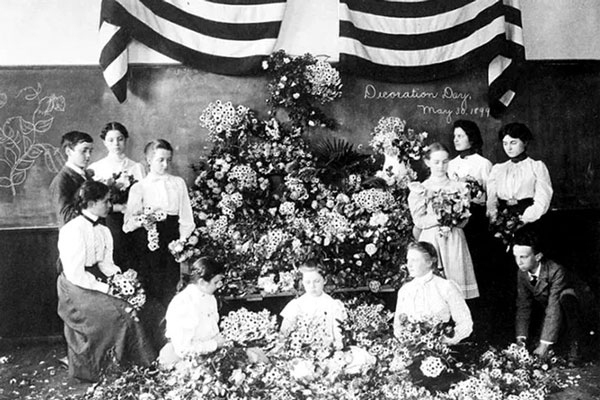
Preparing to decorate graves, May 1899 (Library of Congress)
In the years following the Civil War, Lincoln's aspiration that we should be a nation characterized by malice toward none and charity for all visibly manifested itself in the magnanimity of Americans on both sides of the conflict. After having fought so fiercely over the country both loved, each side collectively extended an olive branch to mourn and to honor the estimated 620,000 men who gave "the last full measure of devotion" in that bitter conflict. (We should do so well today.) posted 5/28/22 A Note to Our Readers
After 80 years of serving veterans, and more than half a century of helping veterans and their dependents obtain the finest quality care and assistance in filing claims, the American Ex-Prisoners of War has made the difficult decision to cease certifying service officers as well as accepting new claims. The Veterans Administration OGC has agreed to put a notice on their website, and we are doing the same on ours with this notice. To our loyal NSOs, please accept our heartfelt gratitude for your years as accredited service officers with AXPOW. Many thousands of veterans and their families are also grateful for your help. Current, active claims will continue under our certification for the next couple of years as we wind down operations. Please let your claimants know that a new POA will need to be signed allowing you to continue representing them under another VSO’s accrediting authority.
Again, thank you for your service to the American Ex-Prisoners of War and all veterans. Cheryl Cerbone posted 1/24/22 Recollections of Christmases PastWhat are your fondest Christmas memories, made so many years ago? Mental images you carry with you even today, burned into your very identity. Likely, some from as far back as the impressionable years of early childhood. Warm and happy recollections, of moments that even today make the holiday season one of the more joyful events in your life each year.
Many of our AXPOW members carry different, and darker, Christmas memories with them from the dispiriting, and sometimes seemingly endless, times thrust upon them as incarcerated prisoners of war in foreign lands far from their homes. 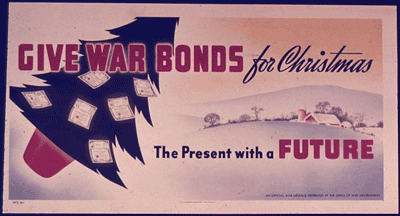
National Archives at College Park
Public domain, via Wikimedia Commons Some members felt compelled to recall those memories in the first-hand biographies they wrote out for our POW Biography database. Still fresh enough in their minds so long after the fact. Memories they could not let go of, and which no doubt shaped them just as did those happy Christmas recollections absorbed in innocent years. (Although most were not that removed from those innocent years when they went off to serve their country and fight for its freedoms. The burdens of war are borne disproportionately by the young.) These stories are ones of deprivation, fear and uncertainty, dislocation and discouragement, but also of abiding hope and a very American will to endure, outlast and overcome their present circumstances. This year as you pause to pray, give thanks or just enjoy this happy seasonal lull in our daily routines, take a moment to recall and offer a prayer of thanks for the men and women, some still living in our midst, many now in our memories, for the courage and commitment they showed in the field and in prison camps to secure that way of life we remain free to live today. Herewith, camp memories at Christmas time by POWs who fought in the European theater during World War II, as they themselves recorded them, drawn from the annals of our members' biographies. Powers, Harry, Army Air Force, 390 Bomb. Group, 571 BS, captured Sept. 14,1943, Dulag Luft, Germany, Stalag 17B, Krems, Austria, Braneau, Austria, Interned 247 days, Age 20.
"I think the uncertainty of what the next day would bring, along with the starvation, cold temperatures, fleas, and the second Christmas of still being there and constant threats of being shot was the worst. We dug a few tunnels but somehow the guards always found out about them, so there were no escapes. We were there for twenty months until our eighteen-day march west to Braneau, Austria. We were liberated on April 5th by Gen. George Patton. My weight was down to about 114 pounds—we were always hungry." Liner, Ernest G., Army Air Corps, captured Aug. 22,1944 in Germany, Stalag Luft 4, Interned 247 days, Age 23.
"Twenty-two men in our room and all of the rooms were alike. Each room had a little coal stove, and we got three bricks of coal a day. Bunks were built around the room, each three high and two wide. Peterson and I slept together, as most of us had one partner with whom we divided food, shared clothes and ate together. Christmas time was coming, which made it harder for everyone. One guy in our room suggested that we start saving our food for the holidays. Then the idea came to make a cake for Christmas day. Each one of us would give something from our parcels such as powdered milk, chocolate, sugar, or salt. When the day came we had lots of food and a beautiful, big cake. Some men in another room had fermented sugar, raisins and other things to make alcohol, and we traded some of our cake for enough alcohol for all of us to have a couple of swigs. The alcohol was very potent, especially on our empty stomachs with that rich cake. Years later there an article about our cake appeared in The American Legion Magazine, December 1957. Some of the men in our room had received musical instruments from home or they were able to get the guards to get instruments for them. These musicians would get together and play. At Christmas the Germans allowed us to use a large hall and the men with instruments gave a wild party. You should have seen the crazy dancing that was done. Until the last song, 'White Christmas,' was played. After that each one of us went back to our room with tears rolling down our cheeks. We were getting some war news from a small radio, the size of a pack of cigarettes that had been smuggled in a piece at the time and kept secret all the time we were there. We could receive the BBC once a day on a certain wavelength. One person listened, and told some other men who, in turn, told other men in each of the other barracks to spread the news of the day." Clark, John R, Army, captured Dec. 21. 1944 at Battle of the Bulge, Stalag 8A And 4B, Interned 113 days, Age 19.
"Clark's ordeal began with a three-day march from St. Vith, Belgium to Prum, Germany. They were given no food during the march. Finally, they reached a railhead, where they were loaded onto box cars, headed for POW camps. They had only been on the train for a part of the day before it had to stop because the American Air Force had bombed the trestles. The boxcars were moved to a siding. Later, an American P-51 shot up the train killing six and wounding 47. The soldier sitting on Clark's left and the one sitting on his right were both killed. Clark said the prisoners then broke the doors down and laid in the snow linking their bodies together to form the words 'USPW.' The plane came back and rolled its wing (in salute). This was the day before Christmas. We spent the night back in the rail cars. On Christmas, we got a half-loaf of bread and a spoon of jam. This was for two days. After marching for three days they were put on another train. Again, they were bombed by their own planes but finally reached the prison camps. During in processing, a German officer took all of Clark's possessions, handing him a receipt for the few dollars and francs he carried. Clark managed to hide two things from the officer, which would become crucial to him as times got tougher. Inside the pocket of his field jacket, Clark hid a tiny note paid he had picked up at an USO canteen. He used this note pad to keep a diary of his captivity and record his thoughts during his ordeal. He also managed to hide a small New Testament." Crawford, John J., Army, captured Dec. 19, 1944 at St. Vith, Stalag 9B, Bad Orb, Interned 104 days, Age 19.
"It was quiet for a few days. On the morning of December 19th they were shelled heavily. They were in a valley surrounded by trees. As John came out of the woods, his unit was told to throw down their guns. Luckily John ran back and got his overcoat, as they marched for three days in the bitter cold. At night they slept huddled together to keep warm. They were finally packed into boxcars for more traveling. The group was bombed one night by their Allies who did not know they were in the cars. Their Sergeant managed to climb out open the doors and they all scrambled for cover until it was over. On Christmas day, they arrived at their destination, Stalag 9B, Bad Orb, Germany. John's first meal was grass soup. Later they received potato soup, which was a little better. There was very little food, showers were few, and body lice were plentiful. After a shower, they put the same clothes back on. The toilet was a hole in the floor." Freedman, Henry E., Army, captured Dec. 19, 1944 at Bliealf, Germany, Stalag Ixb Bad Orb, Stalag Ixa, Zeigenhain, Interned three and a half months, Age 23.
"Hank was captured during the Battle of the Bulge. After much walking and being loaded in 40X8 boxcars and bombed by the RAF on Christmas Eve, Hank arrived at Stalag IXB on December 25, 1944. He was transferred to Stalag IXA on January 25, 1945. After being liberated, Hank spent 3 to 4 weeks in hospitals in France. He had lost 55 pounds as a POW." Jones William D., Army Air Corps, captured May 2, 1944 near Steyer, Austria, Dulag Luft, Stalag 17b, Interned 16 months, Age 20.
"To keep halfway sane I would count the grain in each board in the room. I spent a lot of time remembering the numbers on each board. Occasionally an ant or a bug would appear—it was a way to pass the time. When my last interrogation session had come, I sensed something was different, as I was given a 'Babe Ruth' candy bar, a 'Camel' cigarette from a fresh pack and seated before an SS officer. His English was excellent. He took a loose-leaf binder from a shelf behind him and announced, 'I know who you are—your mother's name is Blanche.' and you came from Manchester, Iowa. He showed me the newspaper item from the Manchester Press, my hometown paper. I was later led to an open area awaiting the trip to 17-B. On arriving at 17 -B, we were photographed and assigned a number. My German prison number was 106244. I was issued two blankets—one was a lace curtain, the other part of a carpet. It was several weeks before I got my first pair of resoled GI shoes and the blankets replaced. For our 1944 Christmas Day meal we had our usual cup of hot water for breakfast, I had five potatoes, all the size of a quarter or less and hot water for supper. Each Combine of 10 men got a loaf of bread, which was divided into 10 slices. Trying to divide oddly shaped loaves of bread 10 ways was one of many problems. I assembled a small crystal radio set. The powers in the camp wanted this outside source of information so I had help in getting needed items. The headset came into camp by a German guard for the price of a few cigarettes, as did the crystal. A coil was made by wrapping a Pepico tooth powder tube with wire and thread. The larger you made it, the greater the range, and a magnetized needle. Wiring in the barracks was such that we could unravel it. On barracks checks, etc., I carried the headset, which consisted of one earphone, around my waist. My set was working the night that news of D-Day came in. Each radio operator reported to a news team who in turn delivered the news to each barracks after all news was confirmed." Kravetz, Frank A., Army Air Corps, captured Nov. 2, 1944 at Hanover, Germany, Dulag Luft, Obermassfeld, Nuremburg, Moosburg, Stalag VIIA, Interned six months, Age 21.
"There would be no Christmas joy for Frank A. Kravetz in 1944, That Dec. 25, Kravetz was recovering from burns and shrapnel wounds to his legs in a makeshift hospital for Allied prisoners of war in Obermassfeld, Germany. He had been a POW since Nov. 2, 1944 when his B-17 bomber went down over Hanover, Germany. When he had first reached the hospital, set up in an old school, conditions were bearable. But by Christmas Day, 1944, the hospital was jammed with new patients, most of them young American soldiers wounded and captured in the Battle of the Bulge, Hitler's last-gasp effort to turn the tide of World War II in Western Europe. Then the hospital was overwhelmed with patients. The newly wounded were laid on stretchers on the floor between the bunks. Supplies of food and medicine were running low. 'In fact, you had guys literally dying left and right,' Kravetz remembered. The new patients brought with them devastating news. Prior to Hitler's massive winter offensive, launched Dec. 16, 1944, it was widely believed that Allied forces would quickly bring Germany's war machine to its knees. But information brought by the new patients dashed any hopes that the Nazis were ready to quit fighting. 'The Germans were overrunning our troops,' Kravetz said. Red Cross packages arrived in time for Christmas. Kravetz received a pipe and took tobacco from cigarettes to smoke it. Pitchers of beer were provided, and the Germans arranged for a midnight Mass to be celebrated in Kravetz's ward. Still, news of Germany's surprise offensive, which caught Allied commanders off guard, over-shadowed the gifts. 'Our morale at the hospital really went to a low ebb,' Kravetz admitted. At one point I thought surely they were going to amputate my left leg because it was turning black,' Kravetz said, but a German surgeon saved the limb. Hanover's rail yards and train station were the targets of air raids by British and American planes. During the raids, Kravetz remained in bed instead of being taken to an underground shelter. 'Windows would shatter. Glass would fly. Beds would jump and everything else, it was just a horrible time to be alone. It would have been different if I had somebody with me to communicate with. I didn't have anybody,' Kravetz said. From Hanover, he was taken to the hospital staffed by the Allies in Obermassfeld. By the end of January 1945, Kravetz was scheduled to come home on a Swedish repatriation ship. But after the Battle of the Bulge 'There were a lot more higher priority people so I went way down on the list,' he said. He was sent next to a POW Camp called Stalag XIIID. After several weeks, he and other captives embarked on a 15-day forced marched to Stalag VIIA in Moosburg, Germany. 'In the middle of February I arrived in Nuremburg, and was there until April 1 when we left by foot for Mooseburg (approximately 150 kilometers). We got there on April 15 and were liberated on April 29th. The march was difficult. 'When you did stop to sleep, you slept in barns or under any kind of roof, whatever the Germans gave you. Or you just huddled together with someone else in the woods and just tried to sleep,' he explained. American forces liberated the Moosburg Camp on April 29, 1945. By then, Kravetz—who at the time of his enlistment had to lose weight to come in under the 175-pound limit—weighed just 125 pounds. I remember the Stars and Stripes going up over the barracks, the swastika coming down' Kravetz recalled. '(U.S. Gen. George) Patton came in and told us, "Everybody stay put. Don't go roaming around the countryside because there are mines around. You fellas aren't in any kind of shape to be traipsing around a lot." For the first time in months, Kravetz ate a slice of white bread. The liberated POWs were also treated to hot chocolate. 'It made guys sick because it was too rich for them,' Kravetz recalled." Hoag, Ralph E., Army, captured 12/23/42 at Long Stop Hill, Tunisia, Campo 98 Sicily, Campo 59 Italy Stalag 4B, 2B, 3B, 3A, Interned 851 days, Age 21.
"After motor patrols and a 600 mile truck ride across Algeria and Tunisia our Battalion met the German 10th Panzer Division at Long Stop Hill, near Medjez el Bab, Tunisia. We attacked at night, took the hill and found our unit was isolated when dawn came. Though a Corporal, I was a rifle squad leader due to the illness of our Sgt. On December 23, 1942, after several hours of rifle and grenade fire, low on ammunition and with several casualties, we surrendered . We were made to leave our wounded behind and instead made to carry German wounded to the rear. I was interrogated in Tunis by a German who had been a butcher in Chicago and returned to fight for the fatherland. On Christmas day, I was put into the anchor chain locker of an Italian destroyer which made the run to Palermo, Sicily. Spent a month at Campo 98, cold and with little food. Moved to Campo 59, Servigliano, Italy. After nine months, Italy capitulated, on Sept.10,1943, and I was free. After nine days I was recaptured by German paratroopers." 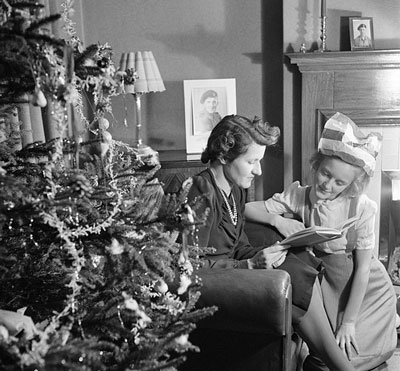
Ministry of Information Photo Division Photographer
Public domain, via Wikimedia Commons "Someday soon, we all will be together, if the fates allow. Until then, we'll have to muddle through somehow." Merry Christmas to all, and to all a good night. posted 12/20/21 Song Book
In 1697 the British poet and playwright William Congreve penned what would become the most misquoted famous line in the history of English literature. In his play The Mourning Bride he makes a broad characterization of the power of music over the human condition: Musick has Charms to sooth a savage Breast, To soften Rocks, or bend a knotted Oak.
First, truncating the line loses the full scope of its meaning, vastly constricting the broad arc of the author's intent. He wasn't just trying to say music is a good sedative, he was saying music has multifarious, almost magical charms. Acting as a soporific for a creature's dyspeptic excesses is only one of them and probably not even the most magical. And second, he wasn't talking about animals. A writer of his pedigree deserves more punctilious treatment by posterity. You may never have heard of William Congreve, but he was no fluke. Later in the same play he offered up another gem with enduring luster. "Heaven has no rage like love to hatred turned, / Nor hell a fury like a woman scorned." Two in one play! Positively Shakespearian. You knew who he was without even knowing who he was. But mankind down through the ages did not need poetry to discern the ineffable interaction between the human psyche and the transformative power of music. It always had been and always will be recognized as a tonic for every range of circumstances confronting the human condition, even—maybe especially—war. In America our wars have begotten catalogs of melodies that spoke to us, from rousing hymnals to both cheering and consoling ditties, and served to help both soldiers and their loved ones left at home to endure the struggles and uncertainties of their times. Attention Amazon Shoppers!
Make any purchase through the Amazon Smile charity portal, and they'll make a donation to AXPOW—at no cost to you! Just use the link above, and designate part of your purchase price to help fund our POW support activities.
Try it next time you make a buy on Amazon. It's painless. It makes shopping more satisfying. And you'll help a great cause! A fair number are barely if at all remembered, some not even widely dispersed far from their region of origin. Lost in the human clutter of time. After all, music as a business grew up pretty much alongside our country. There may have been catalogs but there was little hard copy storage at first. Before the American Revolution, popular music was pretty much an oral tradition. Most people's exposure to published music was confined to church, occasional concerts and local stage productions, and family and communal traditions. 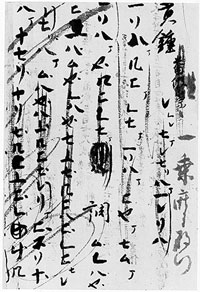
The world's oldest known musical score, Hurrian Hymn to Nikkal, discovered in the 1950s on a clay tablet inscribed with Cuneiform text. You can hear it played on YouTube at Hurrian Hymn (Photo author unknown. Public domain, via Wikimedia Commons) Musical notation, written-down notes and tunes, was developed even before parchment or paper. A cuneiform tablet of musical notation dating back to 2000 BC was discovered in what is today modern Iraq and/or Syria. But until the 15th century all musical notation was produced by hand and obviously not very widely distributed. The first printed sheet music wasn't pulled off the presses until 1473. The late 19th century saw a massive explosion of "parlor music," which generated growing interest in popular music, not to mention ownership of pianos and the wide dissemination of sheet music. And also piano lessons for children. Thomas Edison invented the phonograph in 1877, but by the early 20th century recorded music and its broad popular consumption hadn't yet arrived. Then in the 1920s came commercial radio broadcasting. People knew not only all the songs but how they were really supposed to sound. This improved their singing but also encouraged a finer appreciation for just plain listening to music and enjoying its benefits on an intimate, personal level. Not surprisingly, that evolution can be traced through steady changes in the role and style of popular songs in American culture, from one war to the next. The Civil War
Two songs most closely associated today with the Civil War, possibly thanks to Elvis Presley, are "Dixie" and "The Battle Hymn of the Republic." Maybe even back then. The former is now broadly associated with the Confederate cause, although the song was written as a minstrel piece well before the onset of the war and enjoyed broad popularity on both sides of the Mason-Dixon Line. It was a personal favorite of Abraham Lincoln, who had it played frequently at political rallies and also following the White House announcement of Lee's surrender. Lincoln, born in Kentucky, called it "one of the best tunes I ever heard." The latter was an unabashed paean to the Union's opposition to the institution of slavery, written in 1861 for that purpose. The lyrics were the work of the abolitionist writer Julia Ward Howe put to the tune of "John Brown's Body." Civil War Sing-Along
Dixie
Battle Hymn of the Republic
When Johnnie Comes Marching Home
The Night They Drove Old Dixie Down (Click song title to play.)
Both songs could be, indeed were at the time, seen as anthems for their respective sympathies, "cause-related" songs espousing the existential ideals of their respective sides, and, at least in the case of "Battle Hymn," brimming with rectitude. "Dixie" was seen more as a song about pride of place, but just as serious an expression of sectarian loyalty and constancy. American composer and bandmaster Patrick Sarsfield wrote "When Johnny Comes Marching Home" in 1863, early in the war, while serving in the Union Army. Like many people at the time, the author expected the Civil War to end much sooner than it did. The song was immensely popular and was also sung by both sides, but as the war dragged on, its relevance faded. But by the time of the Spanish American War (1898) it was a national hit again, its triumphal temper no doubt easier to savor in a war where the enemy's naval fleet was entirely destroyed in a single battle. Songs of a more personal nature, reflecting on the war's cost, casualties and personal loss certainly existed, but the thematic musical mainstream of America in the mid-19th century tended towards the martial and aspirational. A very popular song outside of this mainstream, expressing grief over the price of patriotism, was written by a southern sympathizing Canadian musician. But "The Night They Drove Old Dixie Down" was penned in 1970. Not so many philosophical odes like it written at the actual time of the war. Distress in that time was more likely to take the form of rage than sorrow, in the public square at least. Joan Baez's version peaked at #3 on the Hot 100 on October 2, 1971. She had nothing to do with the original composition and even got the lyrics wrong in a couple of spots. But pretty voice. World War I
The U.S. was slow to enter the First World War. Fighting first broke out in the summer of 1914 between the "Central Powers," led by Germany and Austria-Hungary, and the "Allied Countries," Britain, France, and Russia. America was on the sidelines at the start. President Woodrow Wilson, elected two years before, was committed to American neutrality. He campaigned for reelection in 1916 on the slogan "He kept us out of war." World War I Sing-Along
Pack Up Your Troubles in Your Old Kit-Bag
It's a Long Way to Tipperary
Keep the Home Fires Burning
Bless 'Em All
Oh! How I Hate to Get Up in the Morning
Over There
Till We Meet Again (Click song title to play.)
On May 7, 1915, a German U boat sank the British ocean liner Lusitania, killing more than 1,100 people including 128 Americans. In 1917, early in Wilson's second term, Germany greatly increased its attacks on American merchant ships and also attempted to meddle in U.S.-Mexican relations. This was enough to draw Wilson into the war on the side of the Allies. He called on Congress to declare war on Germany on April 6, 1917. Understandably, the war songs Americans heard on their Victrolas and newly acquired living room radio consoles at first bore a distinctly British or even French influence. The British style of war song was typically martial and upbeat, bursting with jaw-thrusting optimism. America's favorite songwriting patriot, George M. Cohan shortly rang up an American entry that did them all one better.
"Over There" typified Cohan's personal brand of super-confident, unflappable, "can-do" Yankee patriotism. It was an instant hit and galvanized the nation. It boosted enlistments and had sold two million copies of sheet music and one million recordings by war's end. Cohan was later awarded a special Congressional Medal of Honor. But in an age when popular music in general was blossoming, America's wartime musical tastes were beginning to change. "Till We Meet Again" tells the story of a soldier and his sweetheart parting as he heads off to the front. It became a sentimental favorite towards the close of the war. It was recorded by Henry Burr and Albert Campbell and in 1919 was declared the number one song of that year. And it had legs. It was subsequently recorded by at least 77 artists, including Doris Day, Bing Crosby and Patti Page. "Keep the Home Fires Burning," called by some War I’s greatest anthem, gained the hearts of the British public from its first public performance. By February 1916 over a million copies of the sheet music had been sold, and the song had been translated into at least six languages. The words to "Bless 'Em All" were written by one Fred Godfrey from his experiences while serving with the Royal Naval Air Service in 1916 at Dunkirk during the First World War. At least that's his story. More likely he just wrote the words down. In point of fact, records suggest he didn't even join the RNAS until the following year. The song is thought to have originated in different versions, some quite salacious, as a popular protest song among airmen serving on India's Northwest Frontier. Far from being the cheerful expression of good wishes to the military bureaucracy they're often taken for, the lyrics offer a derisive "so long" from jaded "time-expired" men to the officers and non-coms who made their lives miserable during their just-completed tour and a sarcastic "good luck" to their innocent, dewy-eyed replacements. It wasn't recorded until 1940 and gained wide popularity, with some sanitized lyrics, among troops throughout the British Commonwealth and the general public during World War II. Others have also claimed authorship of the lyrics. The music, it is generally agreed, was composed by Robert Kewley. World War II
By the 1940s America's musical mood was clearly turning much more up-close and personal. World War II's wartime music began to lean more toward feelings and emotion, romance and just "smiling through" in lieu of patriotic memes and morale-boosting. Not that patriotic and institutional songs disappeared from the scene. He'd already made a songwriting name for himself in WWI with "Oh, How I Hate to Get Up in the Morning," but Irving Berlin would become World War II's George M. Cohan, memorably adding "God Bless America" and "This is the Army" to the national playlist. The former he, too, had penned back in 1918 as a young recruit but set it aside. In 1938, he revised it as a peace song (and what he called a prayer of thanks from a grateful immigrant), and it was introduced on a 20th anniversary WWI Armistice Day celebration radio broadcast, sung by Kate Smith. World War II Sing-Along
God Bless America
We'll Meet Again
Boogie Woogie Bugle Boy
This is the Army Mr. Jones
White Cliffs of Dover
Till Then
I'll Be Seeing You
Lili Marlene (Click song title to play.)
Smith and the patriotic fervor she stirred during World War II contributed mightily to the sale of over $600 million ($10.6 billion in today's terms) in war bonds during her marathon radio broadcasts. No other show-business star came near her as a War Bond revenue producer. And there were many trying. Smith's star was dimmed in 2019 by criticism that songs done earlier in her career were racist in character. One was a 1931 rendition of "That’s Why Darkies Were Born." The other, a 1933 recording of "Pickaninny Heaven," made reference to watermelons. The New York Yankees discontinued playing her rendition of "God Bless America" during the seventh inning stretch of home games, and the Philadelphia Fliers removed the statue in Smith's honor that stood in front of their ice arena. Both the revelation and the response may have been an overheated case of political correctness. The songs, while clearly patronizing by today's standards some 90 years later, hardly oozed racial disparagement. The first had been popularized by Paul Robeson, who, granted, may have been in a better position to carry it off. The second was from the movie Hello, Everybody! one of whose writers was Fannie Hurst. It never remotely occurred to anyone to call either of those artists bigoted. The offending lyrics in retrospect appear more a reflection of an era than of racial animus. Smith herself gave an address espousing racial tolerance on CBS Radio in 1945. O tempora o mores. Then there were the Andrews Sisters: Maxene, LaVerne, and Patty. They were already popular music headliners when the war began who remade themselves as Uncle Sam's boogie-woogie ambassadors extraordinaires, entertaining Allied forces extensively on bases in Africa, Italy and the U.S. They too promoted war bond sales, with a rendition of Irving Berlin's song "Any Bonds Today?" They also helped actress Bette Davis and actor John Garfield found California's famous Hollywood Canteen, volunteering their time to sing and dance for visiting servicemen. They volunteered their time at the New York Servicemen's Canteen as well. Their signature wartime hit, "Boogie Woogie Bugle Boy," introduced in the 1941 Abbott and Costello film Buck Privates reached number six on the U.S. pop singles chart and is ranked No. 6 on the Recording Industry Association of America's "Songs of the Century" list. In 1944, the U.S. Office of Strategic Services (OSS) initiated a series of musical propaganda broadcasts designed to demoralize enemy soldiers. They asked Marlene Dietrich to record a number of songs in German for the project and she readily agreed. Dietrich, German-born but living in America since 1930, was by the time of the war a well-established Hollywood star. She had become an American citizen in 1939 and was appalled by Nazism. One of her songs, "Lili Marleen" as it was titled then, became a massive success, not least on German-language OSS radio, where it was the station's theme song. In addition to her OSS recordings, during 1944 and '45 Dietrich performed "Lili Marlene" extensively abroad while entertaining some half a million allied troops and war prisoners across North Africa and Europe, including in Germany. Filmmaker Billy Wilder once quipped she was on the front lines more than Eisenhower. She re-recorded the song in 1944, and versions were released on Decca Records in the US and internationally, in both English and German, as "Lili Marlene, like her own name. She spread the tune all over the United States and Europe, via both radio performances and live shows. (Her original OSS recording remains to this day unissued.) But Dietrich was actually late to the party with Lili Marlene. The first to record it, as "Lili Marlen," was a German singer, Lale Andersen, in 1939. Initial sales were not encouraging: only 700 copies. But that was to change, albeit by chance. After the Nazis overran Yugoslavia, Radio Belgrade, recommissioned as the German forces' radio station, commenced to playing the song over and over, primarily because of a lack of other recordings. And it quickly caught on with German soldiers throughout Europe and North Africa. All except with Nazi propaganda Chief Joseph Goebbels. He didn't care for the song, the story goes, because it wasn't a march (how like a Nazi) and because he didn't like the German songstress, who, it was rumored, associated with Jews and openly criticized the Nazi regime. Gossip like that did a girl's musical career no good in Germany at that time. But Radio Belgrade was getting bushels of letters from Axis soldiers all over Europe and Africa asking them to play it again. Allies, too, heard the broadcasts and were just as captivated. Many Allied soldiers made a point of tuning into Radio Belgrade just to listen to "Lili Marlen" at the end of each day. Whoever that girl back home was that it reminded them all of, she must have really been something. But Goebbels, undaunted, still wanted the song banned. However, the story continues, it turned out General Erwin Rommel, commander of the Afrika Korps, Germany's "Desert Fox," was one of "Lili Marlen's" many, many fans and "requested" of the radio station that it be played for his troops every night. So Goebbels backed off, and the song became Radio Belgrade’s signature sign-off, every night at 9:55 p.m. And so it was that by the end of World War II, "Lili Marlene," thanks to two unlikely "Krauts" and one unlikely "Yank," was said to be, by whatever name, the most popular song in the world. Vietnam
Wartime music in the '60s was a different affair. It was a frenetic time: civil rights struggles (sometimes tragically violent), generational mistrust, Watergate, unusually rebellious youth for whom Vietnam was an unpopular war, a disaffected drop-out culture and rampant mind-altering drug usage. In the words of Bob Dylan, "There was music in the cafes at night and revolution in the air." How frenetic really? Consider that the Moon Walk, Chappaquiddick, the Manson murders and Woodstock all took place within weeks of each other in the summer of 1969. A year later, four students were killed and nine others wounded at Kent State University by Ohio National Guard troops. As it always does, the music of the times largely reflected those times. Often hostile and antagonistic. (When it wasn't about surfing and fast cars: this is popular music we're talking about.) A hint of what was in store came in a little noted and probably poorly remembered 1966 song by Simon and Garfunkel. This uncomplicated and melodious young duo was hardly a protest act, and "7 o'clock News / Silent Night" was hardly a protest song. It provided an ironic interplay between the events of a typically disconcerting (and real) daily news report and the dreamy mood of a peaceful Christmas Carol. The disjunction might be cheekily described in modern times as a "woke" moment. It was a harbinger of where we were going with Vietnam and the other thorny concerns of those tense times. Merry Christmas. Creedance Clearwater Revival was a hot vocal group throughout the '60s and '70s and reputedly a huge favorite among servicemen in Vietnam as well as young people back home. A number of its songs, like "Who'll Stop the Rain," "Run Through the Jungle," "Bad Mood Rising," and Fortunate Son," were received by fans as more or less coded allegories about the war in southeast Asia. John Fogerty, the band's front man, lead guitarist and principal songwriter, dispelled those beliefs. His songs often evoked an air of apocalyptic unease, but the source of the angst wasn't generally Vietnam. The first was about Fogerty's fears, eventually confirmed, over his band breaking up; the second was an alarmum about growing gun violence in America; and the third he was inspired to write after watching the movie The Devil and Daniel Webster. The fourth song, "Fortunate Son," actually dealt with class distinctions in American society. In much the same vein as Bruce Springsteen's "Born in the USA," released in 1984. Both songs had inferential ties to Vietnam (as in, the fortunate sons were not in Vietnam fighting) but those inferences were tangential to the core message of either song. "Galveston," a song written by Jimmy Webb and popularized by American country music singer Glen Campbell, was unarguably about Vietnam, without ever mentioning the war by name. In 2003, it ranked number 8 in the 100 Greatest Songs in Country Music and number 1 on the country music charts. It reached number 4 on the Billboard Hot 100 and number one on the "Easy Listening" charts. It was certified gold by the RIAA in October 1969. Not bad for an unnamed war song. "Ballard of the Green Berets" was a popular song that unabashedly cast both Vietnam and the military in a positive light. And was well-received for it. In 1966 it reached the No. 1 spot for five weeks on the Hot 100 and four weeks on Cashbox. It also reached No. 1 on Billboard's Easy Listening chart and No. 2 on Billboard's Country survey. "Ballard of the Green Berets" and "California Dreamin'" by the Mommas and the Papas were tied for #1 in the Cashbox end-of-year survey for 1966. Tony Orlando and Dawn's "Tie a Yellow Ribbon 'Round the Old Tree" is about a man returning from prison, not Vietnam. But soldiers in-country appeared to relate to it in a big way just the same. The shoe fit, so to speak. The origin of the yellow ribbon as a badge of constancy likely dates back to the 19th-century practice of women wearing a yellow ribbon in their hair to signify devotion to a husband or sweetheart serving in the U.S. Cavalry, which may have inspired the John Wayne movie "She Wore a Yellow Ribbon." Vietnam War Sing-Along
7 o'clock News / Silent Night
Ballard of the Green Berets
Fortunate Son
We Gotta Get Out of This Place
Galveston
Tie a Ribbon 'Round the Old Tree (Click song title to play.)
Their single made the top 10 song list in ten countries, and in eight of them it topped the chart. According to the Folklife Reading Room of the Library of Congress, even though the song was released in 1973, there's no actual record of yellow ribbons appearing during the Vietnam War or any other conflict pre-1980. The tradition didn't surface broadly until 1980, when 52 American embassy workers were taken hostage in Iran. One theory argues that the yellow ribbon as a modern sympathetic symbol began in 1975 with Gail Magruder, wife of Watergate figure Jeb Magruder. She put yellow ribbons around her porch to welcome her husband home from prison. A senior member of Richard Nixon's Committee to Reelect the President, Magruder pled guilty to a single-count indictment for his role in the botched Watergate Hotel burglary and ensuing cover-up. He was sentenced by Judge John Sirica to a term of ten months-to-four years, of which he served seven months. And his wife was at home waiting for him, with a lot of yellow ribbon. Nobody really thought Magruder was the brains of the operation. He went on to become a Presbyterian minister. Another song favorite of soldiers in Vietnam was "We Gotta Get Out of This Place" by raucous British rockers The Animals, fronted by the booming-voiced Eric Burton. The connection is obvious enough, but in plain fact, the song had absolutely nothing to do with the War in Vietnam. Another Animals recording, "The House of the Rising Sun," was also very popular in the camps in the Delta. Same with Jimmy Hendrix, who reputedly avoided Vietnam by pretending he was gay. (He was also known to have strong anti-communist sympathies.) Sometimes they just liked the music. A modern-day interpretation of William Congreve tailored for the adolescent mind:
prepared by Sir Elton John and Bryan Adams. posted 11/5/21 The Battle of the Bulgeposted 11/14/20
The trip: both ways.

 Westbound march, on foot (1945); Westbound march, on foot (1945);
 Eastbound stops, by car (2000). Distance: 355 mi. (571 km) Eastbound stops, by car (2000). Distance: 355 mi. (571 km)posted 7/8/20
Statement of The American Ex-Prisoners of War before the
Committees on Veterans' Affairs, U.S. Senate/U.S. House Of Representatives, March 3, 2020
National Commander Robert G. Certain
Chief Executive Officer Cheryl Cerbone Legislative Officer Charles Anthony Susino 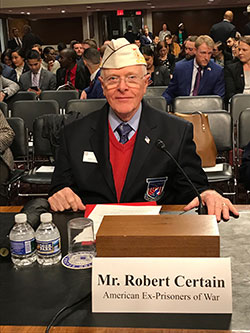 Chairmen Mark Takeno and Jerry Moran, and members of the House and Senate Veterans' Affairs committee and guests, my name is Robert Certain, National Commander of the American Ex-Prisoners of War. Thank you for the opportunity to express our comments today.
Chairmen Mark Takeno and Jerry Moran, and members of the House and Senate Veterans' Affairs committee and guests, my name is Robert Certain, National Commander of the American Ex-Prisoners of War. Thank you for the opportunity to express our comments today.
Our legislative agenda has been very consistent year to year. It is based on the earned benefits of the veteran for serving their country, never using the word "entitlements" in the same sentence as veteran. Its center is healthcare and fair compensation to the veteran and their family. We are grateful for the efforts of this committee and this Congress over this past year. You have stepped up and passed several key pieces of legislation in support of our veterans. Your time is scarce and other major Congressional agendas often displace the attention on veterans' needs so we ask for your patience, persistence, and unwavering support. Three major initiatives became law in 2019. The first: Full Military Honors Act of 2019. This act ensures that a veteran shall receive full military honors if the veteran (1) is first interred or inurned in Arlington National Cemetery, (2) was awarded the medal of honor or the prisoner-of-war medal, and (3) is not entitled to full military honors because of such veteran's grade. This was a long time coming and is just recognition for those heroes who gave so much for their country, regardless of rank. The second allows this nation to live up to the promise that we will never forget those still missing in action. Prominent federal buildings and national war memorials will now fly the iconic POW/MIA flag alongside the American flag throughout the year thanks to legislation signed into law in November. The proposal, passed without objection in the House and the Senate earlier in 2019, is designed to help highlight the continued sacrifice of military families whose loved ones are still unaccounted for overseas, estimated at about 82,000 individuals. And importantly for the surviving partners of our veteran heroes: The National Defense Authorization Act for FY 2020 completely eliminates the Widow's Tax after three years. No changes will take place in calendar year 2020. In 2021, one-third of the SBP will be restored. In 2022, two-thirds will be restored. On January 1, 2023, the SBP will be completely restored and surviving spouses will receive their SBP and DIC payments in full. Again, this was a long time coming and will positively affect nearly 65,000 surviving military spouses. Thank you for your efforts. Unfortunately, an equally important initiative has been overlooked by Congress for nearly three decades. The flat rate Dependency and Indemnity Compensation has not been increased since 1993.Compared to other Federal survivor programs, DIC lags behind almost 12%. The current DIC flat rate is 43% of the compensation of a fully disabled single veteran. Other Federal survivor programs provide a survivor annuity of 50-55% of retirement pay to the surviving spouse. We propose a 12% increase once or a "Sunset Provision" of 3% each for 10 years for DIC to become equitable with other Federal survivor programs. In 2020, DIC is $1,340.14 a month, or about $16,082 per year. Pretty close to the poverty level for our most fragile citizens. We receive calls from widows who, because DIC is so low, they must abandon the homes where they lived with their veteran spouse. We get calls from our surviving spouse members who want to "cancel the magazine. I can't afford to pay for it." When we tell them that the magazine is paid for by their life membership dues, they are grateful. For most, the magazine is their only connection to the Ex-POW experience. We also get calls from the children of ex-POWs. They want to know what benefits are available over the stipend they get through DIC. Their mothers are nearly destitute. That is not fair to all veterans and certainly not fair to widows of EXPOWs. Below is a letter received as this testimony was being written: Dear Cheryl (CEO Cheryl Cerbone) As a dependent of a former Ex-POW, I am reaching out to you after reading your most recent letter in the bulletin. My mother, Theresa Hoffmann, is a widow and soon to be 98 years old. My dad, Edward I Hoffmann was a POW for 42 months during WW II. He was with the 59th Coast Artillery and captured on Corregidor. Dad passed away in February 1998 from malignant tumor behind his eye. He was 100% disabled Veteran. I moved my mom to Scottsdale, AZ from Omaha, NE four years ago when she could no longer care for herself. Here in Phoenix we have "assisted care homes" which are much more affordable than those larger care facilities. Mom ran out of her Long Term Care Insurance in 2018. At that time I had to negotiate with the owner of the care home a cost that mom could afford which then I had to move her into a shared room. Mom had some money in her savings which I have been supplementing to cover her room, board & care. In August, I had to find a different assisted care home because the owners decided to build a bigger brand new home on the same site. The cost was going from $3,600/month to $5,500/month, so I no choice but to find another care home that would care for her at $3,600/month. Mom is bedridden and although she is somewhat mentally aware, her body has given up on her. Fortunately, the new care home is just around the corner from where my husband and I live. My brother also lives with us who has multiple myeloma and we transport him to doctor appointments and kidney dialysis 3x a week. I walk over daily to help feed mom dinner. Currently, I am supplementing mom's monthly care from her remaining savings of $8,900. Her current DIC is $1,956.00; SS is $1,180 and she has a small pension of $285.00/month which = 3,421.00/month. The difference is $179.00 a month. She will run out of her savings in 49 months. Upon her death, I will most likely need most of that savings to transport her body back to Omaha to be buried with my dad at the cemetery where he is placed. No cremation as she wishes. My plea is an increase in her DIC for $179.00 a month more for her. I had to move her from Omaha to one assisted living home and three different rooms negotiating costs. Then negotiating again with another assisted care home because she doesn't have the funds for the care she needs this time in her life. This shouldn't be the scenario for a widower of a former POW. My parents were very involved and volunteered their time at the VA hospital as well as organized the POW Chapter in Omaha. Mom was adjunct secretary of the POW Chapter as well as chairperson for many, many years. Both are life time members. In hopes of Congress listening at your March testimony, perhaps this letter will help. All she needs is $179.00 a month to continue her care. If this plea should fall on someone else's ears, please let me know. I'm afraid Congress couldn't care less as they are more involved with impeachment hearings than a 97 year old widow of a former POW and disabled veteran. Thank you for taking the time to hear me out and for all that you do for our Ex-POW's.
Sincerely, Do your mothers have to live like this? Could your mothers live on this? don't think so. There are two bills currently before this Congress: HR3221 with 14 cosponsors and S1047 with just 4 cosponsors. Both of these bills were referred to YOUR committees in April 2019. One year ago, with no action except shuffling to subcommittees. You owe it to these most vulnerable of our citizens to do more and do it now. We should not and can not be a nation who abandons the surviving spouse of its veterans. And along this line, did you know that in order to be eligible for DIC, the veteran must have been rated as 100% totally disabled for a period of 10 years? Many years ago, this requirement was changed for ex-POWS to 1 year, but the vast majority of the 778,000 who currently are rated at 100% still had to meet that 10-year requirement. It takes years — sometimes decades — to increase disability ratings to 100%. And by that time, the veteran is usually in poor health overall. We want this Congress to look at reducing the period from 10 years to 1 year for ALL veterans. There are other concerns we have as well. In 1981, Congress passed Public Law 97-37 entitled "Former Prisoners of War Benefit Act." This law accomplished several things. It established an Advisory Committee on Former Prisoners of War and mandated medical and dental care. As Past Chairman of the Advisory Committee, I am concerned that the FACA (Federal Advisory Committee Act) term limits has resulted in the VA Advisory Committee on Former POWs being populated by well-meaning people with no real understanding of or passion for former POWs. That, coupled with the virtual lack of attention from the last several VA Secretaries, has relegated this Committee to the back burner of VA attention back burner of VA attention by moving it from the Secretary's office and placed several levels down under the Veterans Benefit Administration. That placement has made it easy to ignore and its recommendations easy to lose. Some of the unresolved issues when I timed out as Chairman.
Every committee member with long experience and strong connection to the former POW community has been removed from the Committee, along with their corporate knowledge. I never received any report from the VA about the approved recommendations and where they stood in current practice and enforcement. In our opinion, the Committee should be exempt from term limits and its membership should be limited to former POWs, their spouses or children, members of the Pensacola Mitchell Center team, and a certified VA POW doctor. We strongly recommend that Congress pass legislation (possibly titled the John S. McCain Disability Act) to declare all former POWs, as verified by the DoD, to be rated by the VA at 100% disabled from the point at which the legislation is enacted, without further protocol exams. This is totally consistent with the POW list of presumptives passed by Congress over 30 years ago. For the veteran population as a whole, I would also ask for assistance. Decades ago, Congress looked to increase the disability compensation percentages for World War I veterans as they became aged. It is time to again look at this for veterans of WWII, Korea, and Vietnam. All veterans rated at more than 50% disability would automatically be rated at 100%. This Congress is young for the most part. There are only two members of this Committee older than I am; only four members who are my age. The average age of the World War II veteran is 97. Korean War veterans are 88 and Vietnam veterans are well past retirement age at 73. From nearly 25 million who served during these three conflicts, fewer than 3 million are still alive. We need to look closer at "caring for those who have borne the battle." Additionally, the "veterans means test" for access to health care must be eliminated. Should a veteran who worked two or three jobs to provide better for his family later be deprived of healthcare? Each has served his country and earned the same benefits so let us not deprive any deserving veteran of healthcare. It is most insulting to us when we hear the use of the word entitlements regarding any benefits to the veteran. These are all earned benefits where the veteran has served and sacrificed. Calling them "entitlements" relegates the program to a handout and needs to be eliminated from the language used for veterans. During wartime, there have been civilian POWs held in enemy prison camps, often side by side with our military prisoners of war. In WWII, wives and children were also held with their husbands and fathers. The parents were often individuals working on government contracts building facilities for the military which lead to their capture. To date, they do not receive any compensation nor health benefits other than dental resulting from their imprisonment. Over time, the numbers of these individuals has reduced dramatically yet, there is time to do the right thing and include them within the VA healthcare system. This is deserving treatment for those civilians imprisoned because they were supporting our military operations. It has been decades since a bill has been introduced to correct this long overdue injustice. We ask that you take action in this Congress. We are a small organization. Since our founding on April 14, 1942 after the Fall of Bataan, we have worked to bring attention to and support for Ex-Prisoners of War. At the height of our membership, we had 33,000; today it is less than 9,000. In fewer years than we would like, our concerns will not be heard: our needs will not merit attention by Congress. Looking toward that future, The American Ex-Prisoners of War chose Andersonville National Historic Site and the National POW Museum at Andersonville, Georgia as our legacy. We have been intimately involved with the creation of the museum since the 1980s and are the lead organization in providing assistance—both financial and physical—to that site. In 1994, we lobbied Congress to legislation authorizing the US Mint to create a commemorative silver dollar. The proceeds went to construction of the National POW Museum, with an endowment for future maintenance. The museum is one of the largest in the National Parks system. Along with the National POW/MIA Memorial at Riverside, California, we feel secure that the sacrifices made by American prisoners of war will never be forgotten. And we thank past Congresses' actions in designating these as national sites, assuring they will serve unique positions in history honoring our heroes. Additionally, we strongly support the efforts of Honor-Release-Return and The Ride Home, but challenge you to increase results. Since the early days of the 20th Century (WW I) the United States has left more than 100,000 Military personnel either in the hands of our enemy or unaccounted for on the field of battle. Despite the well-publicized/ verbalized policy "Leave No Man Behind," we have only accounted for approximately 10,000 of those over the last eight decades. Honor-Release-Return is committed to bringing the accounting of the remaining Missing in Action to a close. The Ride Home, Inc. pays tribute to Former American POWS and the families of those Americans still Missing in Action. National POW/MIA Recognition Day, the third Friday in September, reminds us of the sacrifices our soldiers and their families make for our country every day and our responsibility to let them all know that WE WILL NOT FORGET. Combined conflict totals in the last century equal more than 120,000 prisoners of war repatriated and more than 83,000 still listed as MISSING IN ACTION. Efforts in North Korea have stalled; the last unilateral turnover of remains was in 2018. There were 10 recovery missions in Southeast Asia in 2019, 4 in Vietnam, 5 in Laos, 1 in Cambodia, but the work is slow and time is running short. It has been 45 years since hostilities ceased. The vast majority of those missing from World War II may never be recovered. And we don't even pursue World War I. We can and must do better. You must make it so. We also work closely with the P.O.W Network. The P.O.W. Network was originally formed 30 years ago as an educational group to maintain the focus on the POW/MIA issue. Over the years, maintaining the almost 4000 biographies of those prisoners or missing during Vietnam has taken a backseat to answering daily questions on false claims of heroism or POW captivity. The mission now is to see that those recording history will be held accountable. Facts, not cover-up or fairy tales must be the most important basis for these historical efforts, be it POW/MIA or veterans military claims. According to The New York Times, the Department of Veterans Affairs paid disability benefits to more than six hundred people falsely claiming to have been POWs in the Vietnam and Persian Gulf wars. The number of stolen valor cases reported to the FBI has tripled in the last decade. In fact, more imposters lie about earning high military declarations for battlefield bravery than the actual number of real-life hero recipients. These imposters trade on tales and the trappings of military valor to secure privileges such as career advancements and even unearned veterans' benefits. This is unacceptable on virtually every level. Before awarding benefits to anyone claiming to be recipients of military medals, particularly Medal of Honor, Purple Heart, or Prisoner of War, the VA must check first with the Department of Defense for verification of such claims. Only after verification shall benefits be granted. Several pieces of new legislation are important and continually improving all facets of the Veterans Administration operation is necessary. We often speak at this hearing about how the VA needs to improve and model its methods about particular successful and efficient industries. We need to get to where we use the term operational excellence and VA in the same sentence. For an organization that large it takes time, but we need to focus on select areas to build some successes to point at. As an attachment to this statement, I am including the latest VA Pocket Guide. I don't know how many of the members of this committee have seen or read it. Please take a few minutes and imagine the people who depend on both the VA system and you. Thank you for your time and attention in support of ex-POWs and all veterans—deserving heroes every one. The Pueblo Marks a Fifty-Second Anniversary. In Absentia.
posted 2/27/20 Last Mass
by Richard A. Stratton (USN ret.)
posted 12/30/19 Crueler than Fiction: Building the Trans Burma Railway
posted 3/17/19 Statement of Charles A. Susino, National Director/Legislative Officer, American Ex-Prisoners Of War, Before the Committees on Veterans' Affairs, U.S. Senate/U.S. House of Representatives, Washington, D.C., March 7, 2019

AXPOW Legislative Officer Charles A. Susino
Chairmen and members of the House and Senate Veterans' Affairs Committee and guests, my name is Charles A. Susino, National Director/Legislative Officer of the American Ex-Prisoners of War. I thank you for the opportunity to express our concerns today. Many of you knew my father, Charles Susino, Jr., National Commander of our organization for many years. It was his voice that urged many of you to do the right thing on behalf of all veterans. I will attempt to channel that voice today. This past July, my family and I, and the veteran community as a whole, lost the strongest advocate on behalf of those who cannot speak to you directly. Many of you knew my dad from his years of testifying. He professed to me and others, "It's about the deserving veterans receiving want they earned ." So it is on that theme that I proceed. First, we wish to acknowledge the passing of a great American, the 41st President of the United States, George H. W. Bush this past November who proudly served this country both in the military and in public office. We are grateful for your efforts over this past year. This Congress has stepped up and passed several key pieces of legislation in support of our veterans with respect to health care, compensation, and public awareness. We look forward to a productive 2019-20 as the 116th Congress works on our behalf. If you disagree with us—either here today in testimony— or as we work for our fellow veterans, please say so and we will respect your position. Otherwise we ask for your unwavering advocacy on these issues. We draw your attention to several bills which we believe have special merit and request your active support.
Many would agree the modernization and culture are the most difficult to achieve. If that is the case than we need to provide the approach including the appropriate metrics to measure the level of attention both from within the VA and its oversight: Congress. In 1981, Congress and the President passed Public Law 97-37. It mandated VA health care for veterans with service connected disabilities as well as other special groups of veterans. It included veterans up to WWI, some 58 years after the end of the war. WWII ended over 75 years ago. We have asked you for the better part of the last decade to revisit the special groups and update to include veterans of WWII, Korea, Vietnam, Cold War, and our recent conflicts in the Middle East. We have requested for many years with no movement on the part of Congress. The political landscape is ever changing and this President may see it appropriate and fair treatment for those that have kept our country free. Thank you for your attention.
|
|||||||||||||||||||||||||||||||||||||

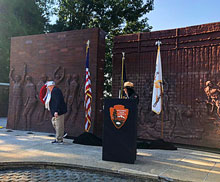

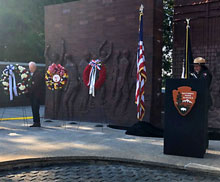
 we also remember the over half a million Americans who have been Prisoners Of War throughout history.
we also remember the over half a million Americans who have been Prisoners Of War throughout history.

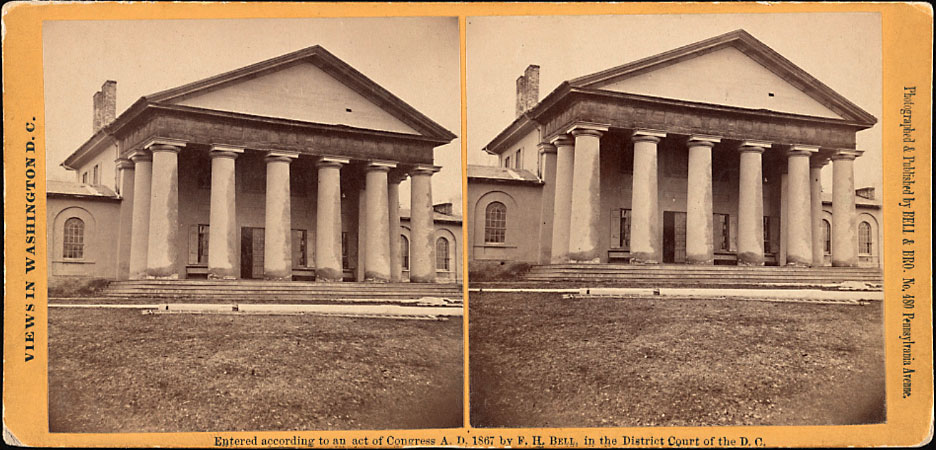
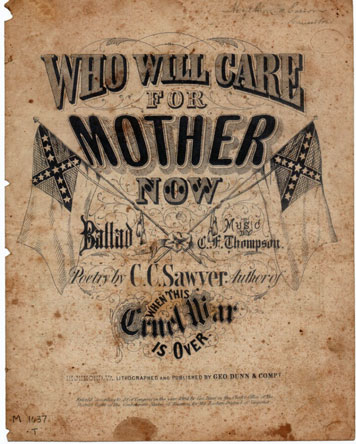 What has come down to us today from that elegant phrasing, literally more often than not, is "Music has charms to soothe the savage beast." And this is a not just a casual disservice.
What has come down to us today from that elegant phrasing, literally more often than not, is "Music has charms to soothe the savage beast." And this is a not just a casual disservice.
